Mallorca, also known as Majorca, is one of my all-time favorite summer destinations. But I’m not alone, with tens of millions of people visiting Mallorca every year, I recommend planning your trip well in advance.
To make sure you get the most well-rounded Mallorca guide possible, I have teamed up with Mallorca expert Linda from “She Knows Islands”. Together we have visited Mallorca more than 25 times.
In this guide, we’ll cover everything you need to know before visiting Mallorca, including how to get around, the top things to do, the best calas, as well as hidden gems and photo spots.
So let’s get to it!
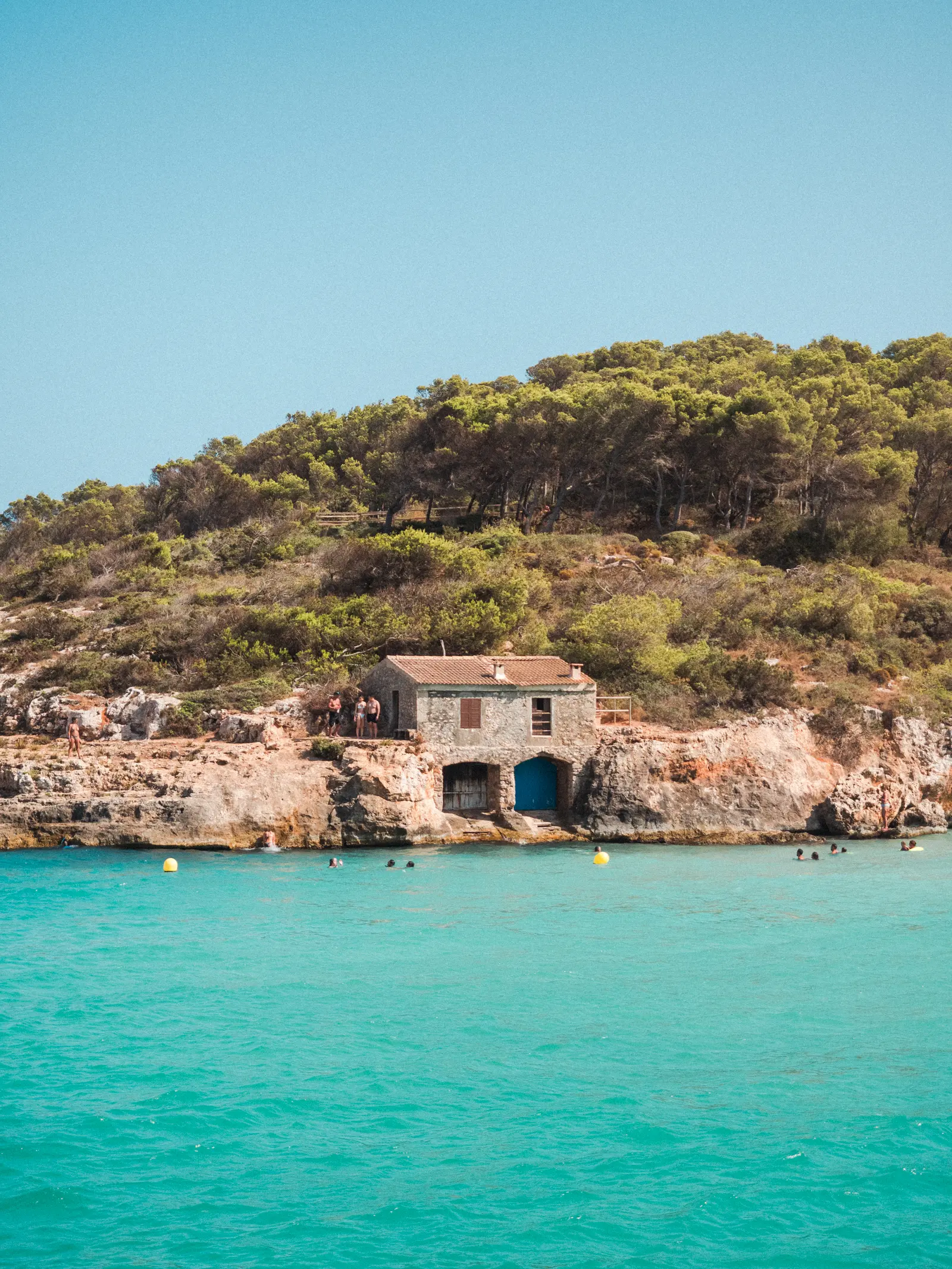
Article overview
- What is the best time to visit Mallorca?
- How many days do you need for Mallorca?
- Quick Mallorca tips & facts
- How to get to Mallorca
- 8 best ways to get around Mallorca
- Mallorca highlights map
- Top 12 things to see and do in Mallorca
- What is Mallorca known for?
- Best Calas in Mallorca
- 10-day Mallorca itinerary for first-timers
- Best areas to stay in Mallorca
- Best restaurants in Mallorca
- Is Mallorca expensive?
What is the best time to visit Mallorca?
The best time to visit Mallorca is between May and October, with the main season beginning in June and ending in September
Spring (April to June): Spring is an excellent time to visit Mallorca with mild weather, fewer crowds and flowers in bloom. It’s the perfect time for hiking and cycling, especially in the Serra de Tramuntana mountain range.
Summer (July to August): Summer is the peak tourist season in Mallorca, with HOT, sunny weather and big crowds.
Autumn (September to October): This is my favorite time to visit, as the high-season crowds have thinned out, but the weather remains sunny and the water is still warm enough for swimming.
Winter (November to March): Winter in Mallorca is the low season, with cooler temperatures and few crowds. It does rain quite a bit in winter and some hotels and restaurants close down.
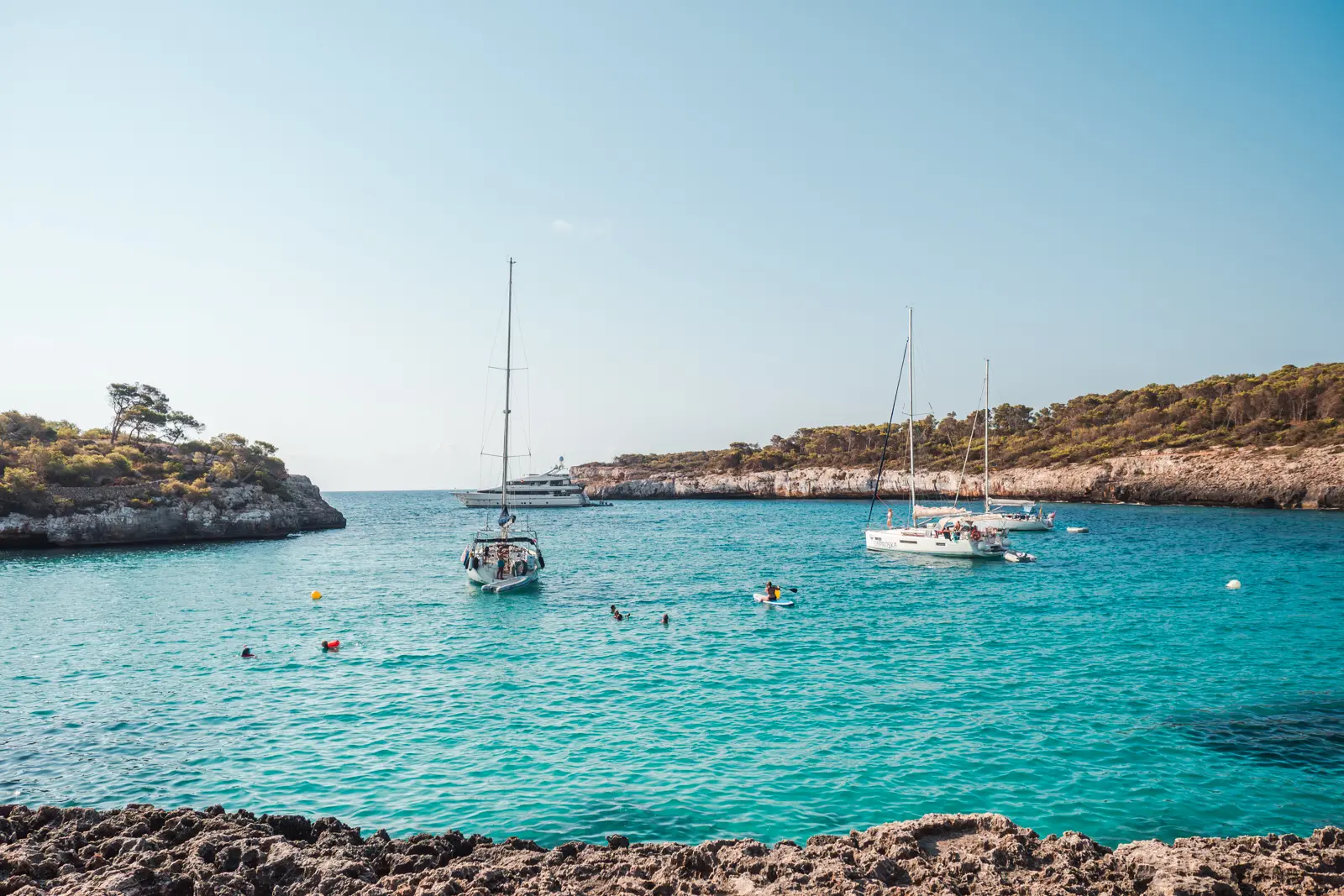
How many days do you need for Mallorca?
10 days is the perfect amount of time to visit Mallorca. If you can’t dedicate 10 days to one destination, a week will get you a long way.
Mallorca is an island, but distances are longer than they appear. There are more than 200 beaches (some say 262) scattered along the coast, as well as nature hikes, charming old villages and historical sights.
While a one-hour drive to reach an attraction might not sound too bad, it is draining to do this every day. With 10 days on the island, you can base yourself in two/three different places so you don’t spend all your time on the road.
Quick Mallorca tips & facts
What is a Cala? In the context of the Spanish Balearic Islands, including Mallorca, a “cala” refers to a small, cove-like beach or inlet that is typically surrounded by rocky cliffs or headlands.
Mallorca or Majorca? Mallorca is the Spanish spelling, pronounced with a soft ‘ll’. When the name was anglicized, it was adapted to “Majorca” with a ‘j’ to represent the same sound, which is more familiar to English speakers.
Currency: The local currency in Mallorca is the Euro. These days, most places take credit cards – restaurants, shops, gelaterias, petrol stations, etc. However, I still like to have some cash on hand for the markets and roadside vendors.
Tipping: Tipping is not obligatory in Mallorca, but in the most touristy areas, I felt it was expected and everywhere else appreciated. Leaving around 5-10% of the bill in restaurants and rounding up taxi fares is common practice.
Siesta time: Many shops and businesses close for a few hours in the afternoon for siesta, usually from around 2:00 pm to 5:00 pm. Plan your shopping and activities accordingly.
Activities and tours: Book in advance if you’re interested in popular activities like boat trips, winery tours or hot air balloon rides during the high season.
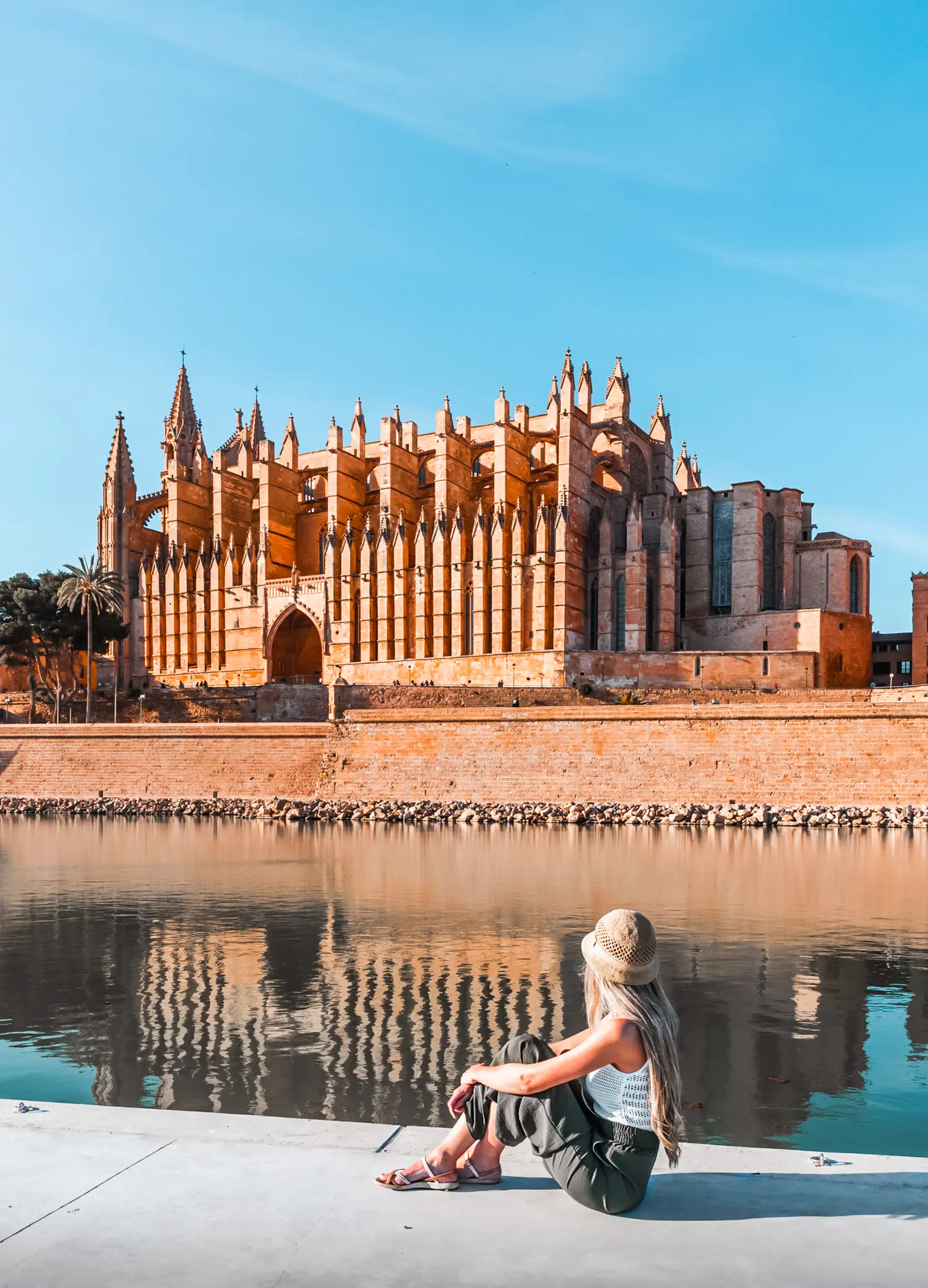
How to get to Mallorca
Mallorca is the largest of Spain‘s Balearic Islands which also include Ibiza, Menorca and Formentera and the smaller islets Cabrera and Dragonera.
Getting to Mallorca from Europe is super easy thanks to budget airlines such as Ryanair, Wizzair and EasyJet. Flights usually start around €50 (+ luggage fee), but sometimes they run sales starting at €12.
I know that United Airlines runs a direct route from New York to Palma, which is great. However, it might be more affordable to get a connecting flight through a bigger European city.
Additionally, ferries connect Mallorca to several destinations in Spain including Ibiza, Menorca, Barcelona and Valencia.
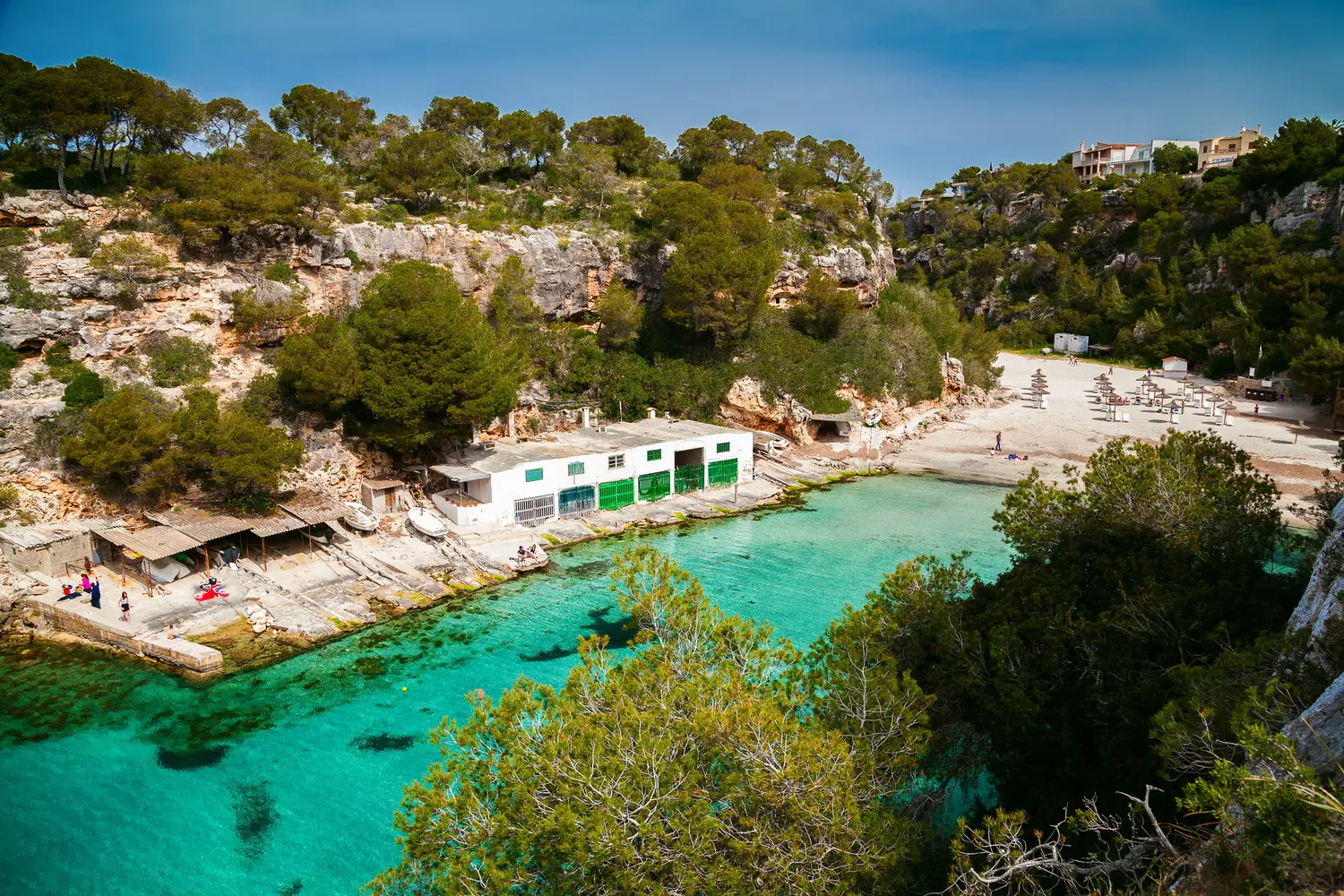
8 best ways to get around Mallorca
Spanning almost 80 kilometers from north to south and 100 kilometers from east to west, getting around Mallorca takes a bit of planning. Here’s a quick overview of all transportation options:
1. Rent a car
A car is a must to get the most out of Mallorca. Some of the most beautiful attractions are not connected to public transport. I usually don’t like driving in unknown places, but it was totally fine in Mallorca.
Pro tip >> You can rent a car through offUgo, it is the best car rental experience I’ve ever had. Pick-up and drop-off is 100% contactless and the price includes full insurance without excess fee, in addition to 24/7 pick-up.
How long does it take to drive around Mallorca?
To get an idea of how big the island is, it takes around one hour and 30 minutes to drive from Port de Sóller on the west coast to Cala d’Or on the east coast. And you can add another half hour during the high season in July and August.
The longest route running in a loop around the island is just over 300 kilometers long, which means it takes around 6 hours if you drive non-stop.
2. Take the bus
For those not driving, there are two main bus services in Mallorca. The blue and white EMT buses run throughout the greater Palama area, and the yellow and red TIB buses link the capital with smaller towns and villages.
You can buy single tickets or a 10-ticket bono pass from centrally located tobacco shops and kiosks for the EMT buses.
The TIB buses leave from Palma’s main Intermodal station which is at Plaza de España (follow the yellow line underground).
Tickets can be bought beforehand at the ticket office, on the bus or online. You can also buy 20 or 40 ticket passes for a slightly cheaper price.
Pro tip >> Outside of Palma, paying your bus fare with a card instead of cash can save you up to 40%. Just tap your card when you get on and off the bus, or transfer to another line.
3. Ride the trains and metro
TIB also runs trains from Palma to Manacor and Sa Pobla, stopping at lesser-known villages, such as Santa Maria, Lloseta and Binissalem. On most trains, you can take your bicycle with you for free.
Mallorca’s small metro service consists of two lines (M1 and M2) that operate in Palma. The M1 line connects the center of Palma with the University of the Balearic Islands, while the M2 line runs between Palma and the town of Marratxí.
Also, consider taking the historic train from Palma to Sóller, known as Ferrocarril de Sóller, which has been operating since 1912.
4. Rent a Vespa or motorbike
Many of the older towns and villages have very narrow streets, so getting around on two wheels can be a great option. There are many rental places in and around Palma, and you can also book online.
Make sure to take pictures of the scooter or motorbike at the rental place before you leave, and that your travel insurance covers it.
For the adventurous, cycling is a popular option, with well-marked routes showcasing the island’s natural beauty.
5. Take a taxi
Sometimes hailing a taxi is just more convenient than relying on public transport. Especially if you’re limited on time. Taxis are readily available in Palma, but also in other tourist hubs such as Cala d’Or or Magaluf.
To hail a taxi on the street, look for white cars with blue license plates and a green rooftop light. If you’re staying in Palma, download the Palma Taxi app to order in advance.
Is Uber available in Mallorca? Yes, Uber is now operating in Mallorca. You can choose between standard Uber, vans for larger groups, comfort reserve for higher-end cars and order a local taxi through the Uber app.
However, from my experience, a standard Ubur costs a lot more than taking a local taxi running on a meter.
7. Ride a bike
Mallorca’s varied terrain of flat plains, rolling hills and challenging mountain routes in the Serra de Tramuntana, makes it a haven for cyclists. Take advantage of the numerous well-maintained cycling paths and quiet country roads.
Additionally, the capital has a scenic almost 16-kilometer-long bike lane along the Bay of Palma.
Bike rental shops are abundant, with options ranging from basic models to high-end road bikes and many also offer guided tours and support services.
8. Join a guided tour
Are you docking in Mallorca during your cruise? Or maybe you only have a few days on the island? The best way to maximize your time is by joining a private tour!
On this half-day private tour of Mallorca, Miguel will take you to charming villages such as Deia and Valldemossa. You will also stop by Port de Sóller and the capital, and along the way, you can enjoy the views of olive groves, mountains and the sea. It is great for groups as the price is the same for up to 8 people.
🌟 Click here to check price and availability >>
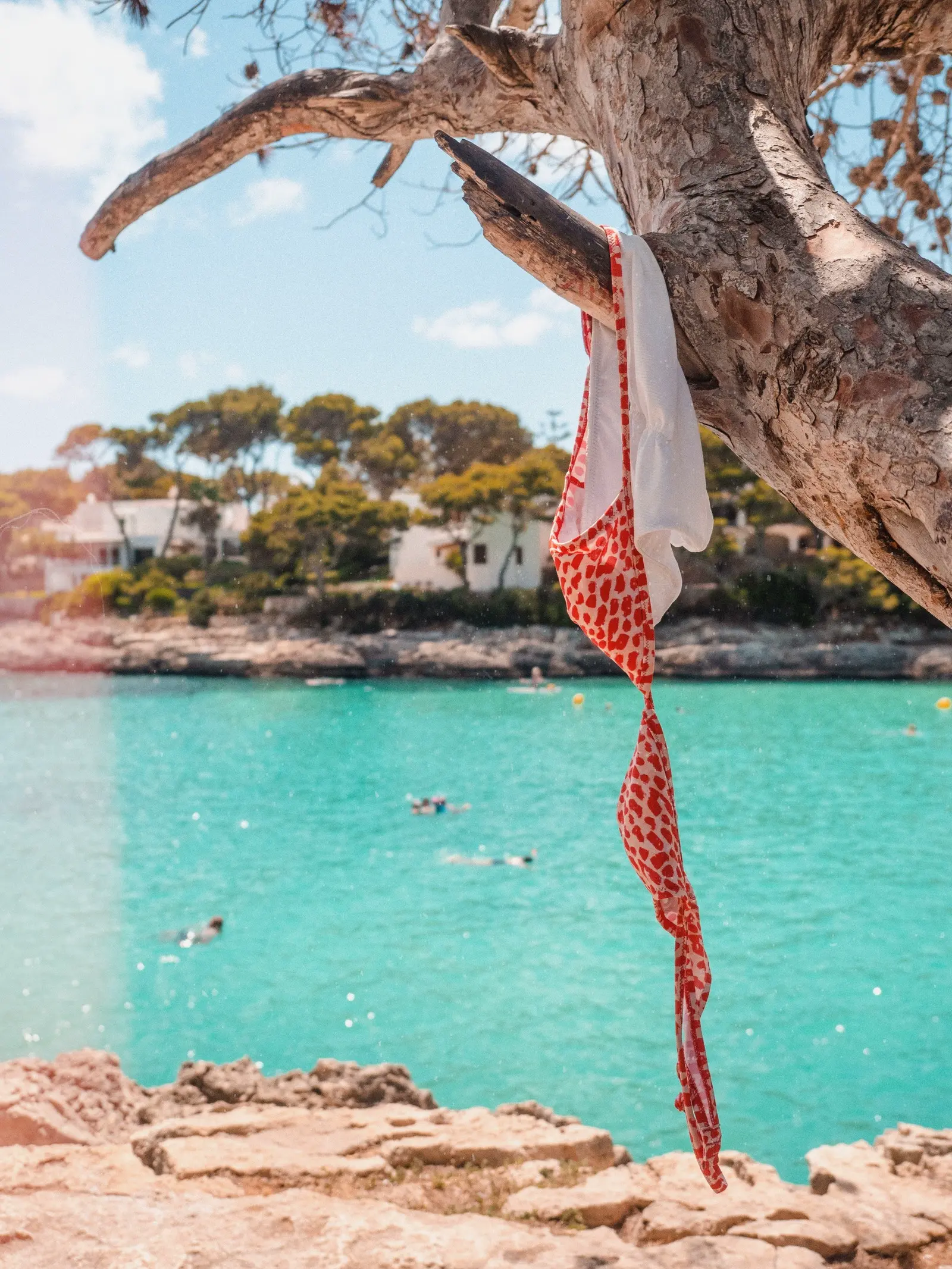
Mallorca highlights map
Below you can access my Mallorca highlights map, with pins for all the best restaurants, photo spots, calas and things to see. Click on the rectangle in the upper right corner to access it in full size, or on the star to add it to your maps.
Top 12 things to see and do in Mallorca
There are so many amazing experiences to be had in Mallorca, so we can’t cover them all, but here are some of our favorites:
1. Bellver Castle
Bellver Castle is a gem that is often overlooked, even though it is located just 3 kilometers southwest of Palma city center.
Built in the 14th century, Castell de Bellver is one of the few circular castles in Europe. You can explore the central courtyard, the Gothic-style chapel and a small museum that chronicles the history of Palma. But let’s face it, the main reason to visit is the gorgeous panoramic views.
To get there from Palma, you can drive or take the EMT bus to “Plaça Gomila”, from where it’s about a 15-minute walk uphill to the castle. Alternatively, you can walk all the way along the seafront promenade and then uphill.
2. Palma Cathedral & Old Town
Palma Cathedral, also known as La Seu, dominates the capital’s skyline and is the most iconic landmark in Mallorca. Built from sandstone in a Gothic style, it boasts one of the world’s largest stained glass windows and a stunning interior that includes work by the famous modernist architect Antoni Gaudí.
Adjacent to the cathedral, the Old Town of Palma awaits with its labyrinthine streets, historic buildings and hidden courtyards. I love to wander around exploring a variety of shops, cafes, museums and photo ops such as the Roman arch below.
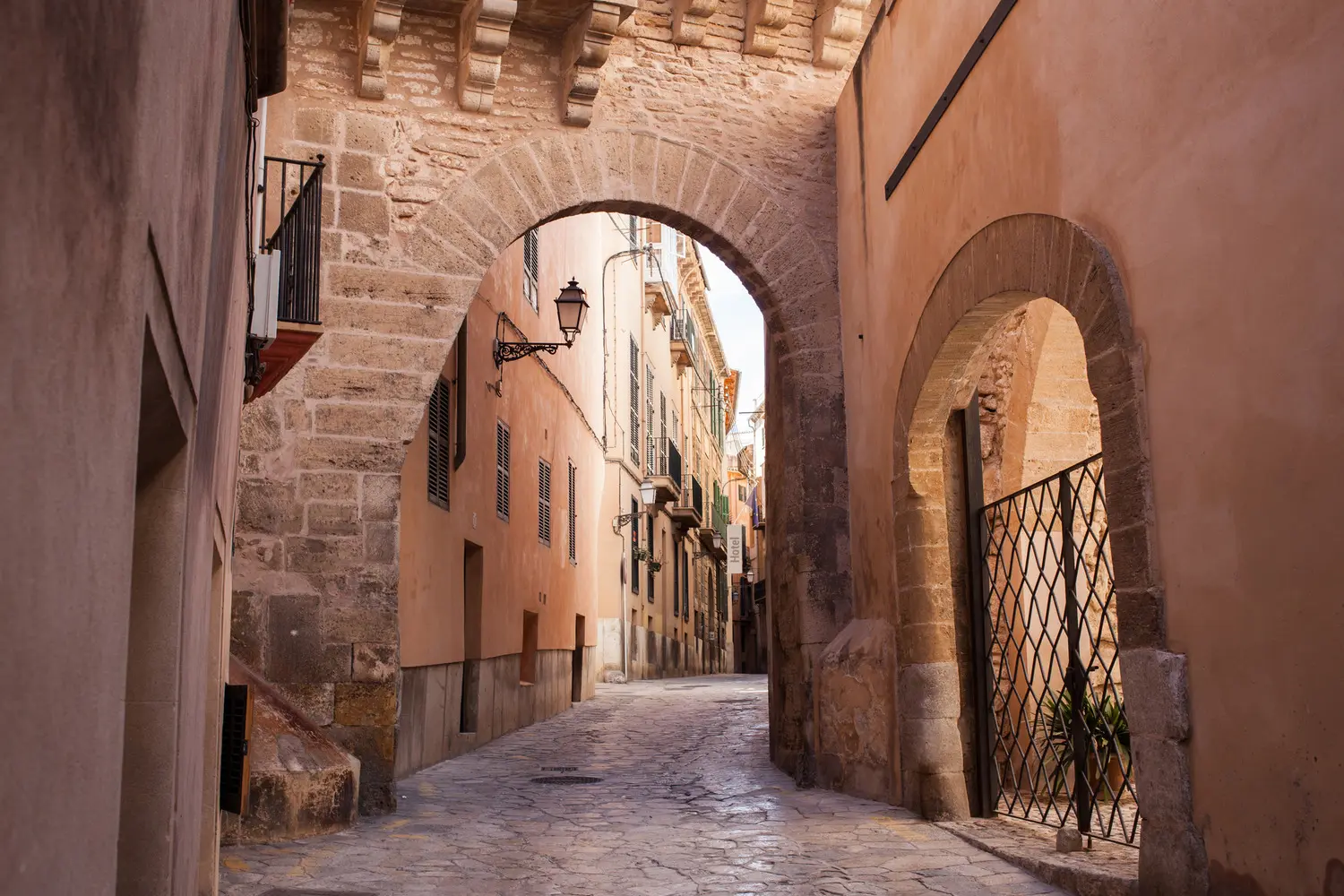
3. Valldemossa & Deia
Deià and Valldemossa are two beautiful villages on the northwest coast, in the heart of the Tramuntana Mountains, a UNESCO World Heritage Site. Popular with tourists, you should arrive early in the morning or late in the afternoon to avoid large crowds.
Deià attracts visitors with its traditional stone houses, winding streets and the main sight, a charming church boasting panoramic views. It’s easy to see why the beauty of Deià has inspired artists and writers for centuries.
Just south of Deià, you’ll find Valldemossa, famous for its former Carthusian monastery, the Real Cartuja. I love strolling through the narrow, streets, exploring the local craft shops and admiring the traditional Mallorcan architecture.
The villages are linked by one stage of the GR221 long-distance trail, also known as the “Ruta de Pedra en Sec” (Dry Stone Wall Route) which I highly recommend for everyone who wants to explore Mallorca’s beautiful nature.
Pro tip >> On the road from Deia to Valldemossa, I suggest stopping at a spectacular viewpoint called Mirador de Valldemossa II. You’ll find it in the map above.
4. Sóller and Port de Sóller
Sóller, a picturesque town nestled in a lush valley of orange groves between the mountains and the sea, is a gem of Mallorca’s west coast.
Known for its historic charm, Sóller is connected to Palma by a vintage wooden train that winds through the scenic Tramuntana range. The town’s main square, Plaça Constitució, is surrounded by cafes and is home to the beautiful Church of Sant Bartomeu.
A short tram ride away from Sóller town lies Port de Sóller, a tranquil harbor with a curved bay, sandy beach and a promenade lined with shops and restaurants. This coastal village is a haven for water sports, relaxation and enjoying the Mediterranean lifestyle.
Pro tip >> Stop by Ecovinyassa, a stunning orange and lemon farm, on the way from Sóller to Fornalutx.
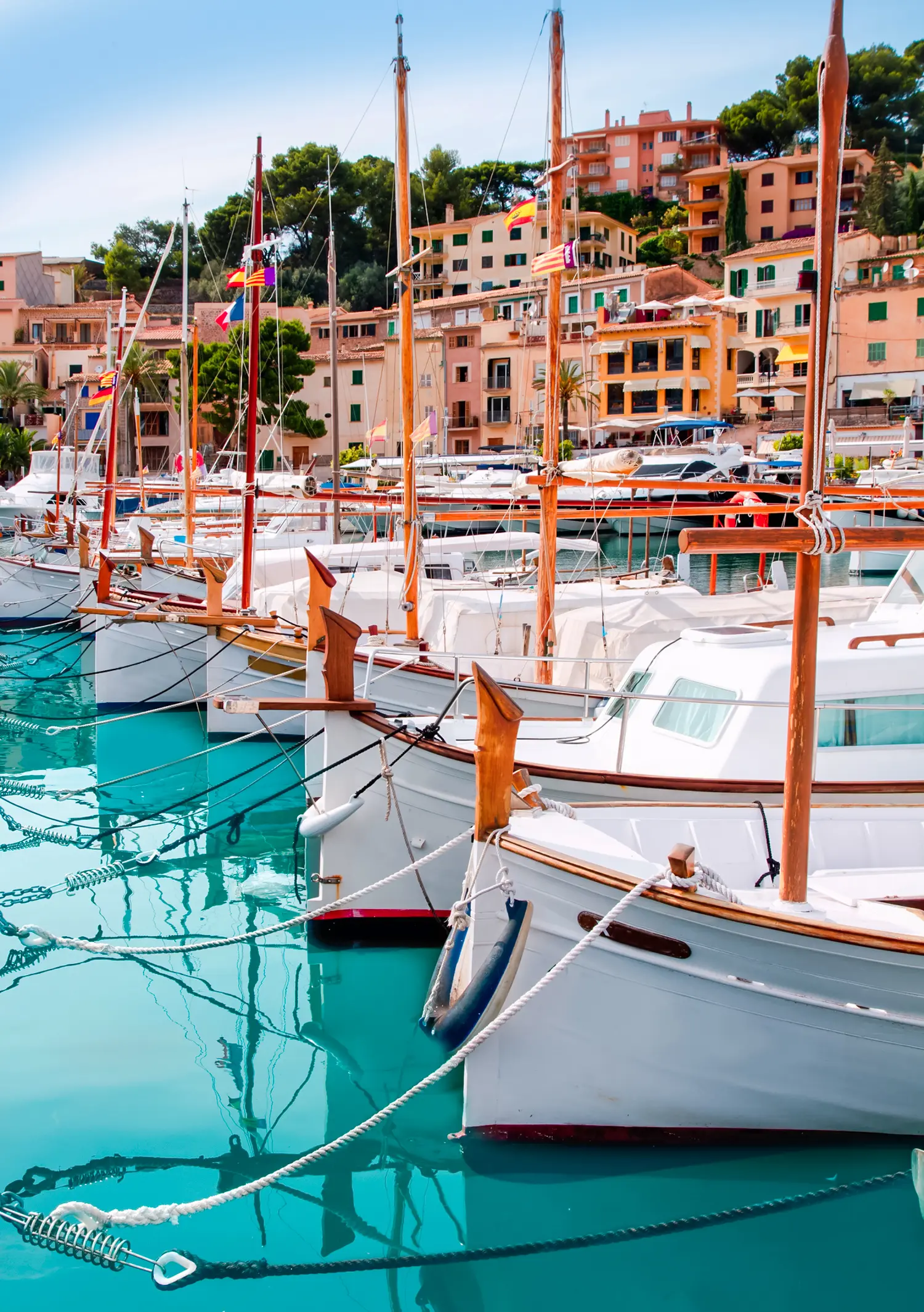
5. Fornalutx
If you couldn’t tell by now, I love a charming old village and Fornalutx in the Tramuntana mountains is no exception. Surrounded by lush orange and lemon groves, the village offers breathtaking views of the mountains and the serene countryside. You should stop by on your way to Sa Calobra.
6. Torrente de Pareis
You have to see this place, it is truly spectacular. Torrent de Pareis, a dramatic limestone gorge, is one of the island’s most spectacular natural wonders. Carved over millennia, the 200-meter-tall cliffs descend dramatically into the sea, culminating at the stunning pebble beach of Sa Calobra.
Get there early to find a parking spot clearly marked on Google Maps, and from there, it is a short walk (400 meters) towards the outlet of Torrent de Pareis. Read more about hiking the area further down.
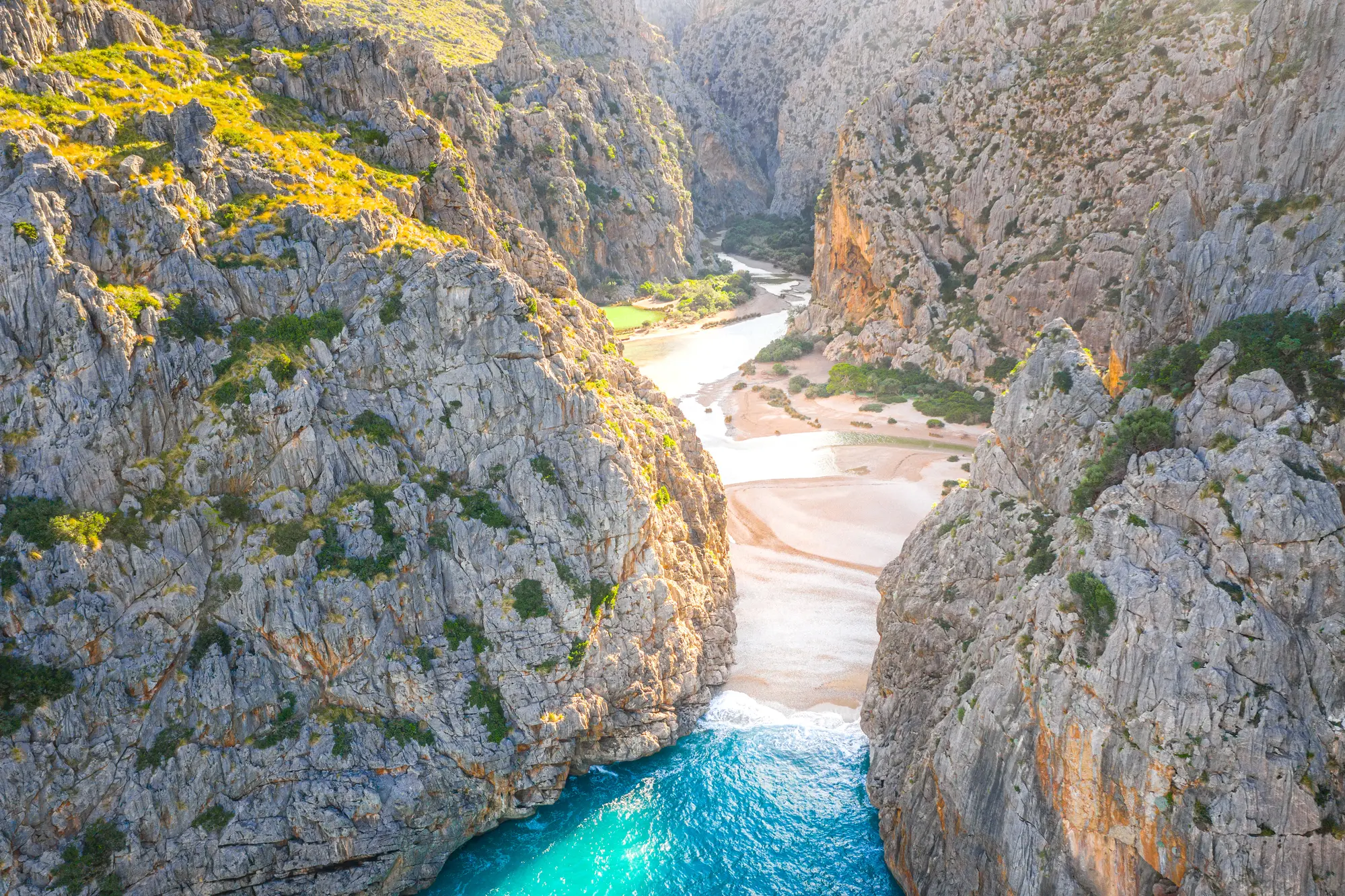
7. Mortitx Canyon
Are you up for a thrilling canyoning experience? Then you have to see Mortitx Canyon, also located in the rugged and dramatic landscape of the Serra de Tramuntana mountains.
Known for its challenging terrain, the area is a hotspot for canyoning, an outdoor activity that involves descending through narrow gorges, rappelling down waterfalls and swimming through natural pools.
The canyon is also in close proximity to the Mortitx vineyard, allowing you to combine your outdoor adventure with a taste of local Mallorcan wines.
8. Pollenca, Port de Pollenca & Cap Formentor
Pollença, Port de Pollença and Cap Formentor are three highlights in Mallorca’s northwest that you can easily combine and visit in one day.
Pollença is located inland and is a historic village with beautiful narrow streets around the main square, Plaça Major. My personal highlight is the impressive staircase that leads to the El Calvari chapel. After 365 steps (one for each day), you are rewarded with a great view over the village.
Just on the other side of Pollença, I can recommend the walk up to Puig de Maria. After a steep 30-45 minute climb, you will have a great view of the north coast and of course Pollenca from the former monastery.
Port de Pollença, a popular coastal town with a beautiful beach promenade. Perfect for a lunch break and stroll along the coastline. The harbor, where traditional llauts lie alongside modern yachts, gives the town a special flair. From here you can go sailing, windsurfing and diving.
Cap Formentor, the spectacular peninsula, forms the northernmost point of Mallorca and is known for its striking lighthouse and breathtaking views. From June to September, the road is now closed for private vehicles (I was once stuck in a jam here for 2 hours) so take the bus departing from Port de Sóller instead.
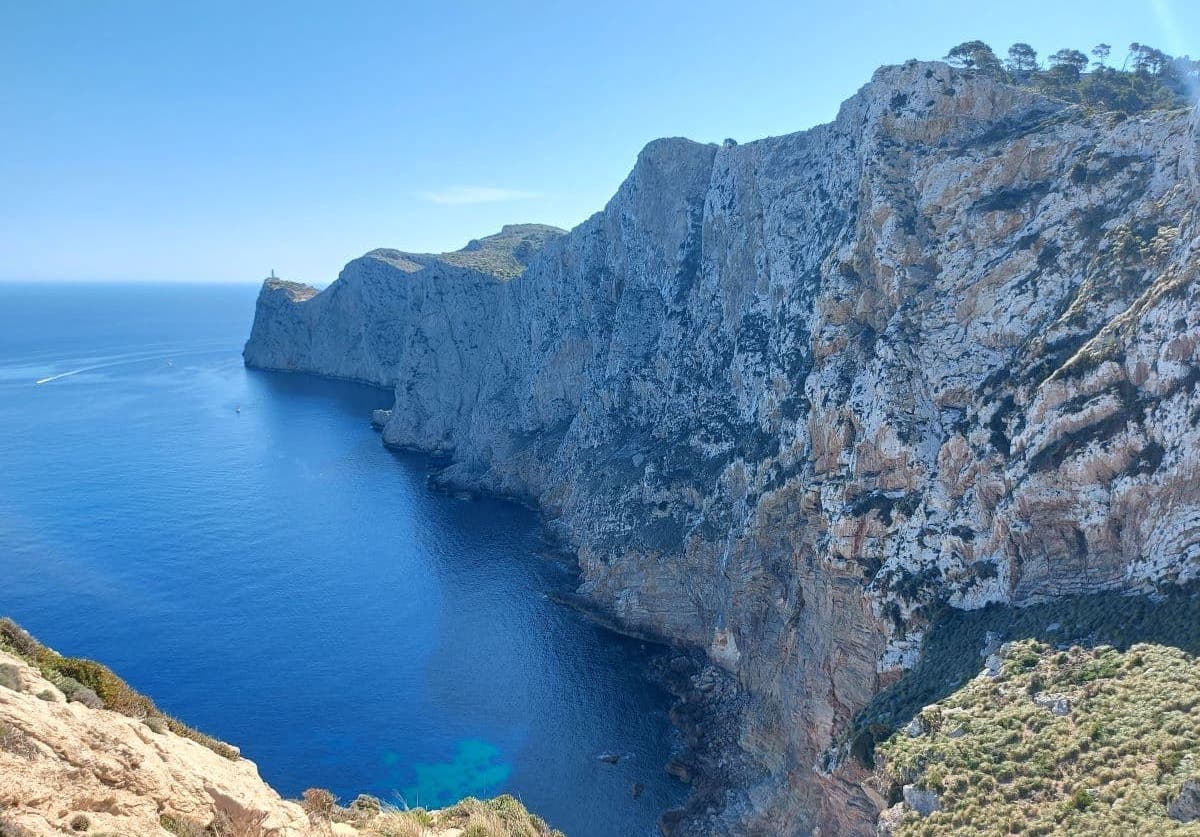
9. Alcudia
The old town of Alcudia is another gem in Mallorca most people seem to miss, instead many are drawn to the all-inclusive resorts next to Port de Alcudia.
But I highly recommend you set aside a few hours to explore this charming town renowned for its beautifully preserved medieval walls, Bougainvillea-covered houses and cobbled streets. Twice a week you can browse local produce, crafts and souvenirs at the local market.
Alcudia also serves as a gateway to the stunning landscapes of the northern part of the island, including the nearby S’Albufera Natural Park.
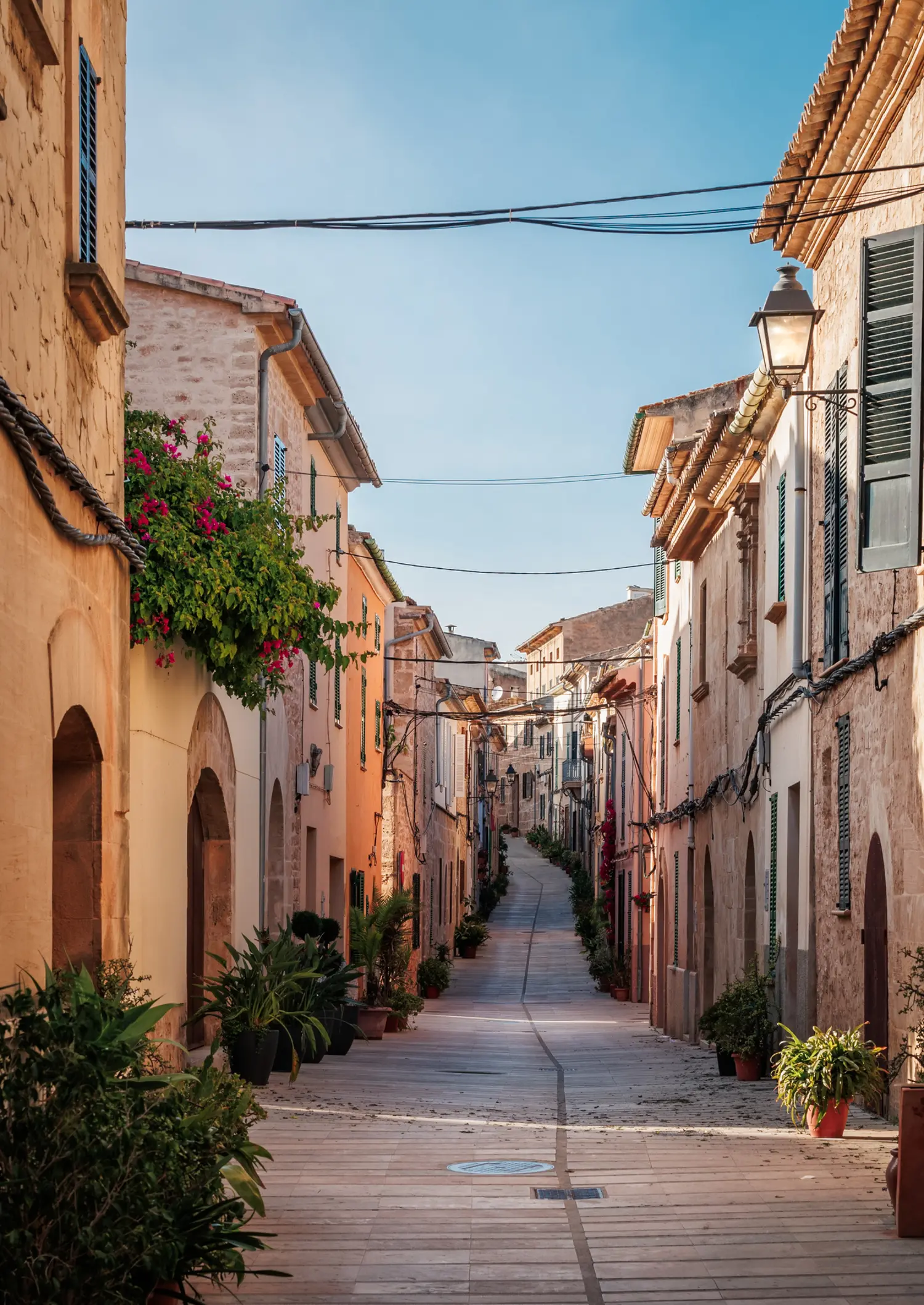
10. Mondragó Natural Park
This is where I stayed during my last visit to Mallorca, and I love it! Mondragó Natural Park, situated on the southeastern coast of Mallorca, is a haven for nature and beach lovers.
Declared a natural park in 1992, this protected area spans over 700 hectares, showcasing a diverse landscape of sandy beaches, crystal-clear lagoons, rocky coves and a network of trails winding through wild olive and pine forests.
You’ll find two of my favorite beaches in Mallorca, S’Amarador and Cala Mondragó, within one minute of each other. More on those further down.
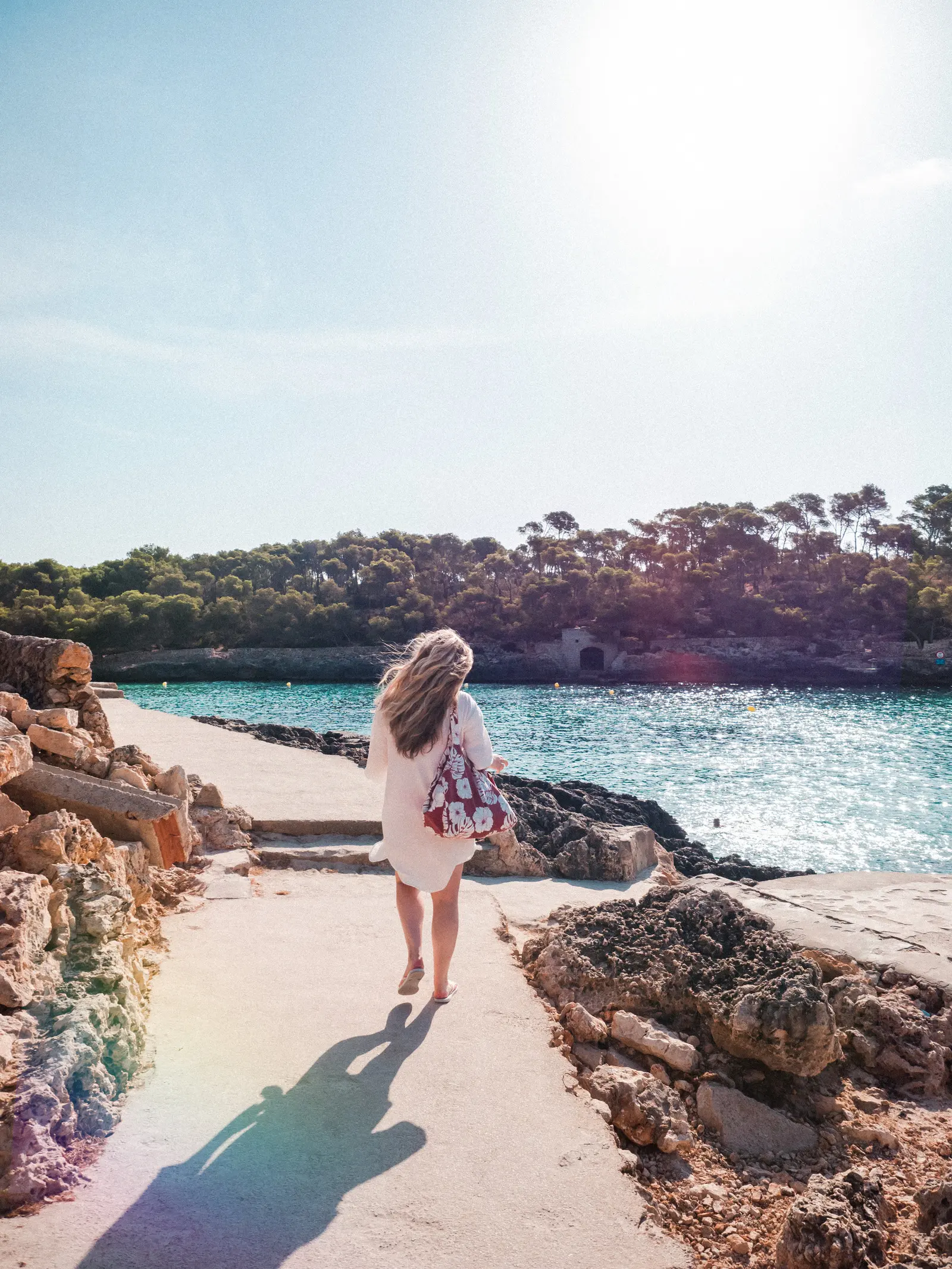
11. Hiking in Mallorca
One of my favorite pastimes in Mallorca is hiking. Due to the summer heat, it is best to explore the island by foot only during the shoulder and off-season, from approx. October to May.
The east and south coasts are not only famous for their beautiful beaches but there are also some great coastal hikes and walks to explore.
I recommend the lovely half-day walk that connects Cala Agulla, at the northern end of Cala Rajada, with the beautiful bay of Mesquida, a large sandy beach. Halfway, you’ll have to make a small climb to reach a mountain with a watchtower ruin. It offers an incredible 360-degree view of both beaches.
My second suggestion is the fantastic cliff walk from the Cap Blanc lighthouse to Cala Pi. The cliff views all along the way are simply spectacular.
Mallorca’s west coast is a different story. The Serra de Tramuntana spans from north to south with peaks reaching nearly 1500 meters.
If you have time, you should hike the famous GR221, which connects Port Andratx with Port de Pollenca, 140 km further north. Alternatively, you can do what I did and hike several sections as day hikes.
🌟 If you want to hike the GR221 as part of a group, I highly recommend this 4-day guided hiking experience.
My absolute favorite trek in Mallorca is the challenging route through Mallorca’s Grand Canyon. Only in summer, you can hike along the dry riverbed of the Torrent de Pareis with rock walls up to 300 meters high to reach the beautiful beach of Sa Calobra.
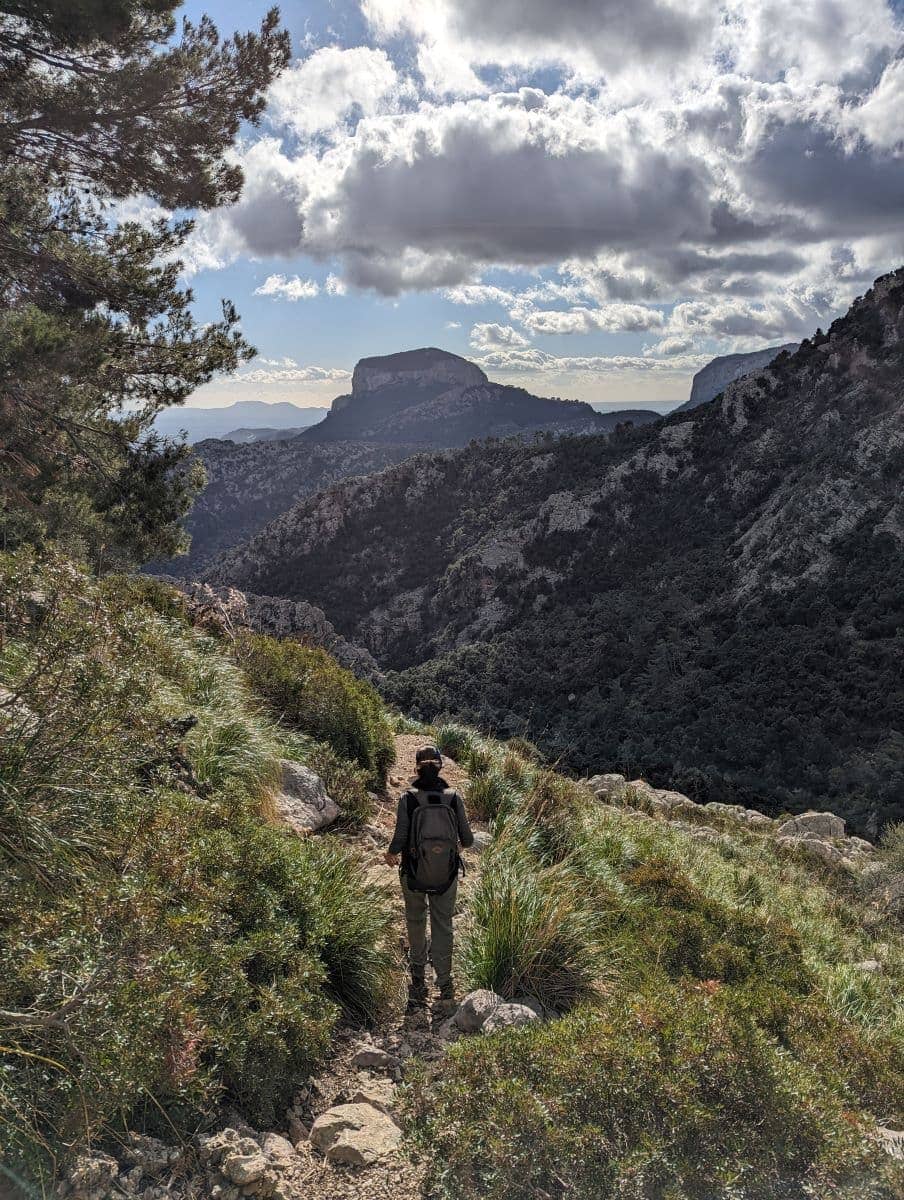

12. Rent a boat
One of the best things you can do in Mallorca is to get out on the water. Guided boat tours are available in most port cities, but you can also rent your own boat.
You do not need to have a license to rent a small day cruiser as we did in Santa Ponsa. And at €160 it was surprisingly affordable for our group of 4.
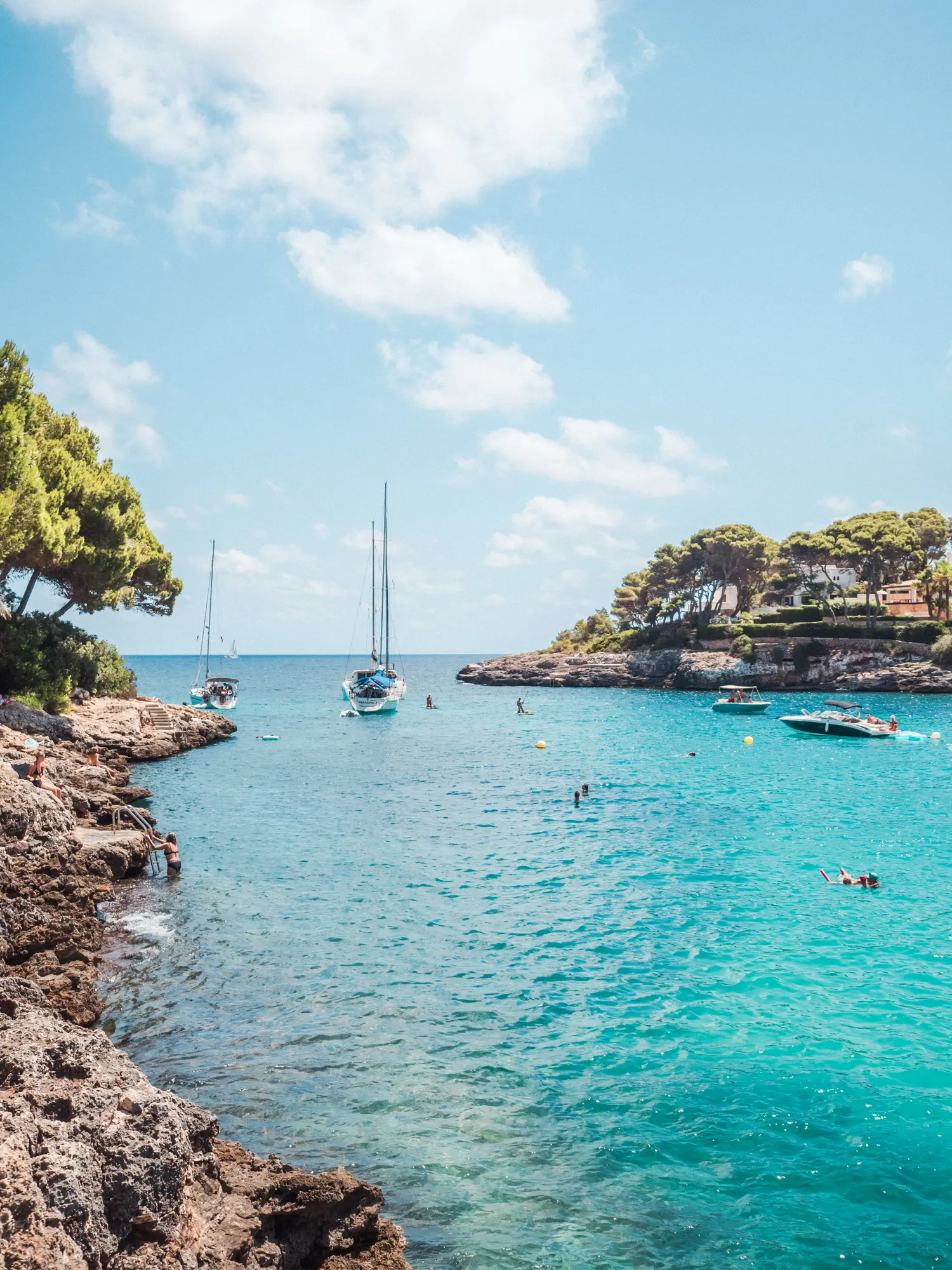

What is Mallorca known for?
Mallorca is first and foremost known for its varied coastline with many stunning calas and beaches. Some are hidden away and only reached through steep inclines, and some you can drive right up to, all lined by crystal-clear turquoise water.
In addition, Mallorca is known for its Mediterranean lifestyle, with an abundance of fresh produce including seafood, citrus fruits and local grapes turned into wine, and a slow way of life.
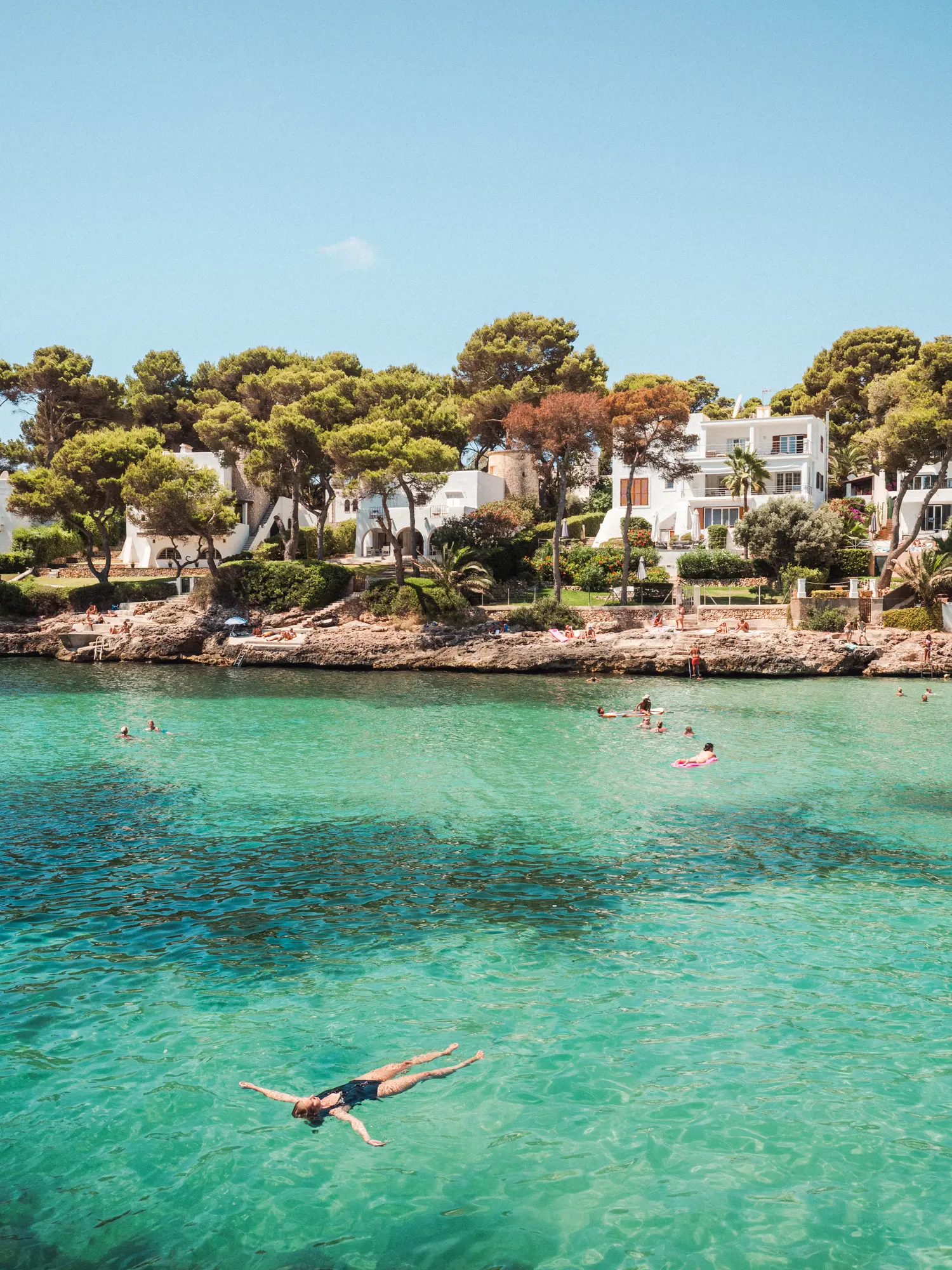
Best Calas in Mallorca
Most of my favorite calas and beaches are located on the east and south coasts.
Cala Varques: This remote and unspoiled beach is only accessible by foot via a dirt track from the main road. The cove itself is a haven of fine white sand flanked by rugged cliffs and turquoise waters, making it ideal for swimming and snorkeling. There are no facilities such as sunbeds and umbrellas, so bring everything you might need.
Cala Mondrago & S’Amarador: I love these beaches surrounded by the forest of Mondrago Natural Park. You can walk back and forth between the two in just a few minutes along a path running along the water’s edge. It is so fun to jump from the cliffs at S’Amarador, and in Cala Mondrago you’ll find a little shop, restaurant and sunbeds.
Cala Santanyí: One of the most beautiful beaches in Mallorca, located about 10 kilometers from the charming town of Santanyi. The cove is over 100 meters long and made up of fine, white sand and clear and calm water. Perfect for swimming and snorkeling. It is a Blue Flag beach, meaning it is clean and has high environmental standards.
Cala Llombards: Located in a town with the same name, this is one of the most popular calas in Mallorca. The water here is some of the clearest I’ve ever seen. You need to arrive before 8:30 am to secure a spot on the sand. There are some picturesque fishermen’s houses on the left of the beach, perfect for a little photo shoot.
Calo des Moro: Just down the coast, Caló des Moro was long one of Mallorca’s best-kept secrets. While the secret is out, it is still very worth a visit. Take in the breathtaking views from the top, and then it’s a short hike down to the water. The beach itself is surprisingly small, on high tide it disappears altogether. So find yourself a bolder to lie down on and enjoy.
Es Trenc: If you get tired of the narrow rocky calas (is that even possible?), spend a day at Es Trenc, a 2-kilometer-long sandy beach further down the coast. Still wild and undeveloped, this vast cove of powdery white sand and Caribbean blue water is a must on any Mallorcan bucket list.
Cala Pi: This little cove is an Instagrammer’s dream. There are several popular viewpoints at the top. The beach is accessed via a steep set of stairs that descend between two high cliffs, leading to a beautiful stretch of fine, white sand and crystal-clear turquoise waters.
Cala Mesquida: Cala Mesquida is a stunning beach on the northeastern coast, known for its wide expanse of fine, white sand and crystal-clear azure waters. It is part of a protected natural area and a favorite among surfers when the conditions are right.
Cala Deia: This is a stone beach, but I just had to include it, Cala Deia is stunning. The water sparkles in deep shades of turquoise, it’s the ideal setting for sunbathing, swimming, cliff jumping and snorkeling. Get there early to secure the best spot on a cement block at the base of the Ca’s Patro March staircase (see map).

Best beaches Mallorca tour
Don’t have a car? Or maybe you’re limited on time? Then I highly recommend this guided tour to three of the most beautiful beaches and coves on the island.
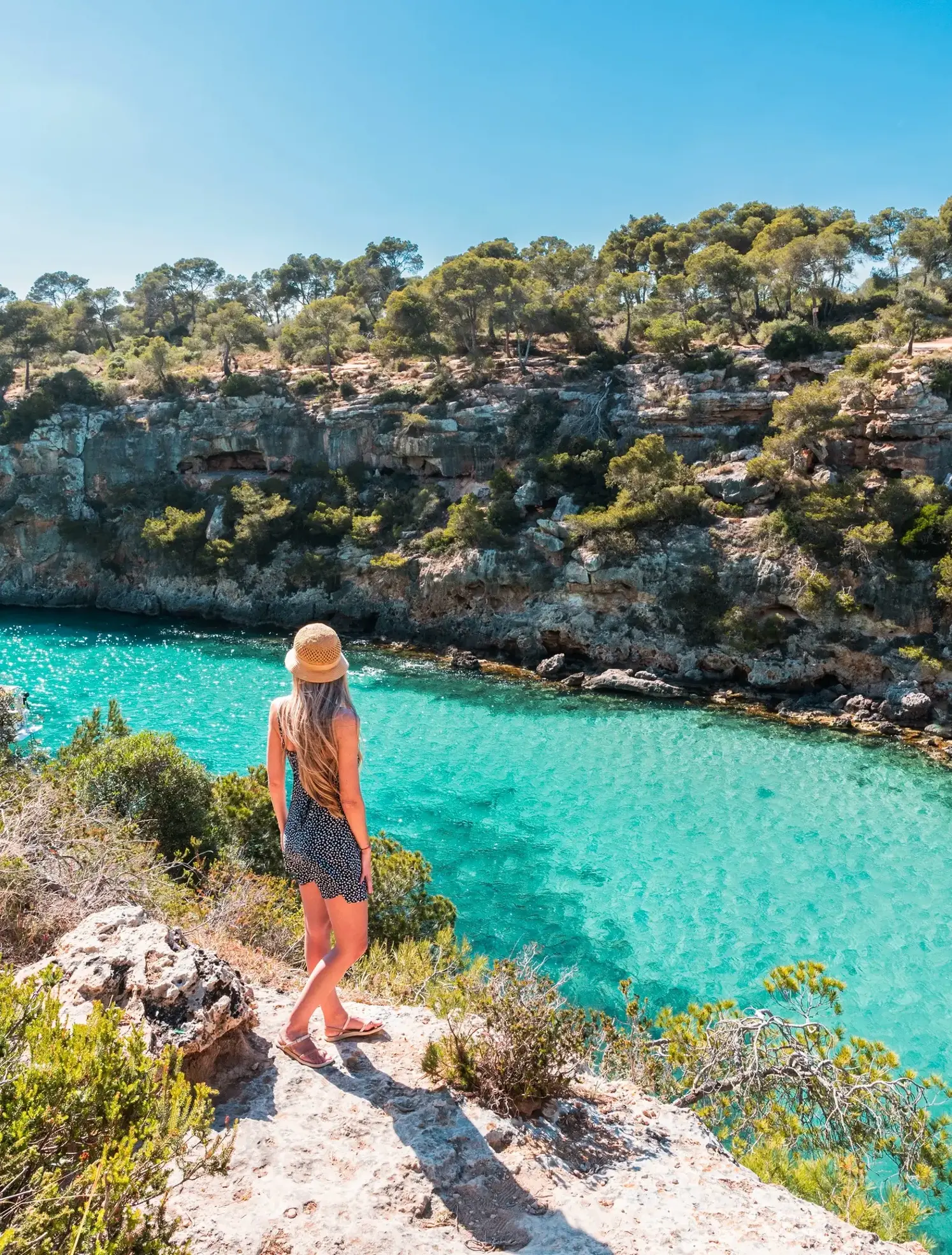
10-day Mallorca itinerary for first-timers
If I were to go back for the first time, this suggested Mallorca itinerary outlines exactly how I would spend my time.
Day 1: Sóller and Port de Sóller
- Afternoon: Arrive in Palma (Son Sant Joan Airport) and collect your car. Drive to Sóller, where you will be based on the West Coast. If you’re a lover of old-world architecture and gardens as I am, stop by Jardins d’Alfàbia on the way.
- Evening: Explore the town of Sóller and take the vintage tram to Port de Sóller for a seafood dinner at Kingfisher Restaurant.
Day 2: Cala Deià and Valldemossa
- Morning: Visit Cala Deià, a small, scenic beach perfect for a morning swim.
- Afternoon: Enjoy lunch on the beach in Ca’s Patró March, or head into the little village of Deià. If you want to get moving, walk along the coast from Cala Deià to Cala Llucalcari.
- Evening: Drive to Valldemossa, visit the Royal Charterhouse and explore the quaint village. Make sure to get a photo of the town from “Mirador de Valldemossa II” viewpoint.
Day 3: Fornalutx and hiking
- Morning: Start your day in Fornalutx, often called one of the most beautiful villages in Spain, and explore its picturesque streets. This area also boasts so many gorgeous hikes, I recommend Sóller – Binibassí – Fornalutx – Biniaraix.
- Afternoon: Stop by Ecovinyassa Citrus Farm on your way back, whether you choose to hike or not.
- Evening: Spend the rest of your day exploring Sóller, if you didn’t have the time on day 1. Have dinner at La Romaguera, my favorite restaurant in Sóller serving everything from tacos to dumplings.
Day 4: Sa Calobra and Port de Pollença
- Morning: Drive to Sa Calobra, enjoy the dramatic drive and visit the Torrent de Pareis gorge. As mentioned above, this is one of the best hikes in Mallorca, though challenging. You can also visit without hiking.
- Afternoon: Check into your hotel in Port de Pollença and go for a walk along the waterfront.
- Evening: Have dinner at Voramar 57 Pizzería right on the water, one of the best pizza places in Mallorca.
Day 5: Cap de Formentor and Pollença
- Morning: Drive to Cap de Formentor, the northernmost point of Mallorca, and take in the breathtaking views from the lighthouse. Stop at one of the viewpoints on the way back, such as Es Colomer, and marvel at the view.
- Afternoon: Head to the charming town of Pollença, explore the historic center and climb the 365 Calvari Steps for stunning views.
- Evening: Enjoy dinner at a local restaurant in Pollença.
Day 6: Alcúdia and Playa de Muro
- Morning: Visit the medieval town of Alcúdia, walk along its ancient walls, enjoy the city and explore the local market (every Tuesday and Sunday).
- Afternoon: Spend the afternoon relaxing on the sandy shores of Playa de Muro, known for its clear waters and family-friendly atmosphere. If you’d rather escape people, go for a walk in Parc Natural de s’Albufera de Mallorca.
- Evening: If you’re a seafood lover I highly recommend stopping by Restaurant Celler Ca’n Costa Alcúdia on your way back.
Day 7: Caves and beaches of the East Coast
- Morning: Drive to the east coast and visit the Cuevas del Drach (Dragon Caves) in Porto Cristo, famous for their underground lake and stunning formations.
- Afternoon: Head to Cala Varques or Cala Romantica for a relaxing beach afternoon.
- Evening: Stay overnight in a coastal town somewhere between Cala d’Or and Santanyí. In Cala d’Or, there are lots of restaurants and bars. If you prefer somewhere more quiet, the area around Santanyí is a great choice.
Day 8: S’Aramador, Santanyí and Cala Figuera
- Morning: Head to the beach. My favorites are S’Aramador in Mondrago Natural Park and Cala Llomards.
- Afternoon: Visit the town of Santanyí, known for its charming market and artisanal shops.
- Evening: Continue to Cala Figuera, a picturesque fishing village and enjoy dinner overlooking the harbor.
Day 9: Cala Pi and Palma
- Morning: On your way back to Palma, stop by Cala Pi. Remember to get some photos from the viewpoint I have marked on the map.
- Afternoon: Explore Palma’s historic center, visit the stunning Palma Cathedral (La Seu) and explore Almudaina Palace. Stop by Can Joan de s’Aigo for an ice cream and pastry.
- Evening: Go for a stroll through the Santa Catalina neighborhood, my favorite area of Palma. Have dinner at La nueva burguesa.
Day 10: Enjoy Palma
- Morning: Head to Bellver Castle for panoramic views of Palma and the bay.
- Afternoon: It’s time to head home after an incredible 10 days.
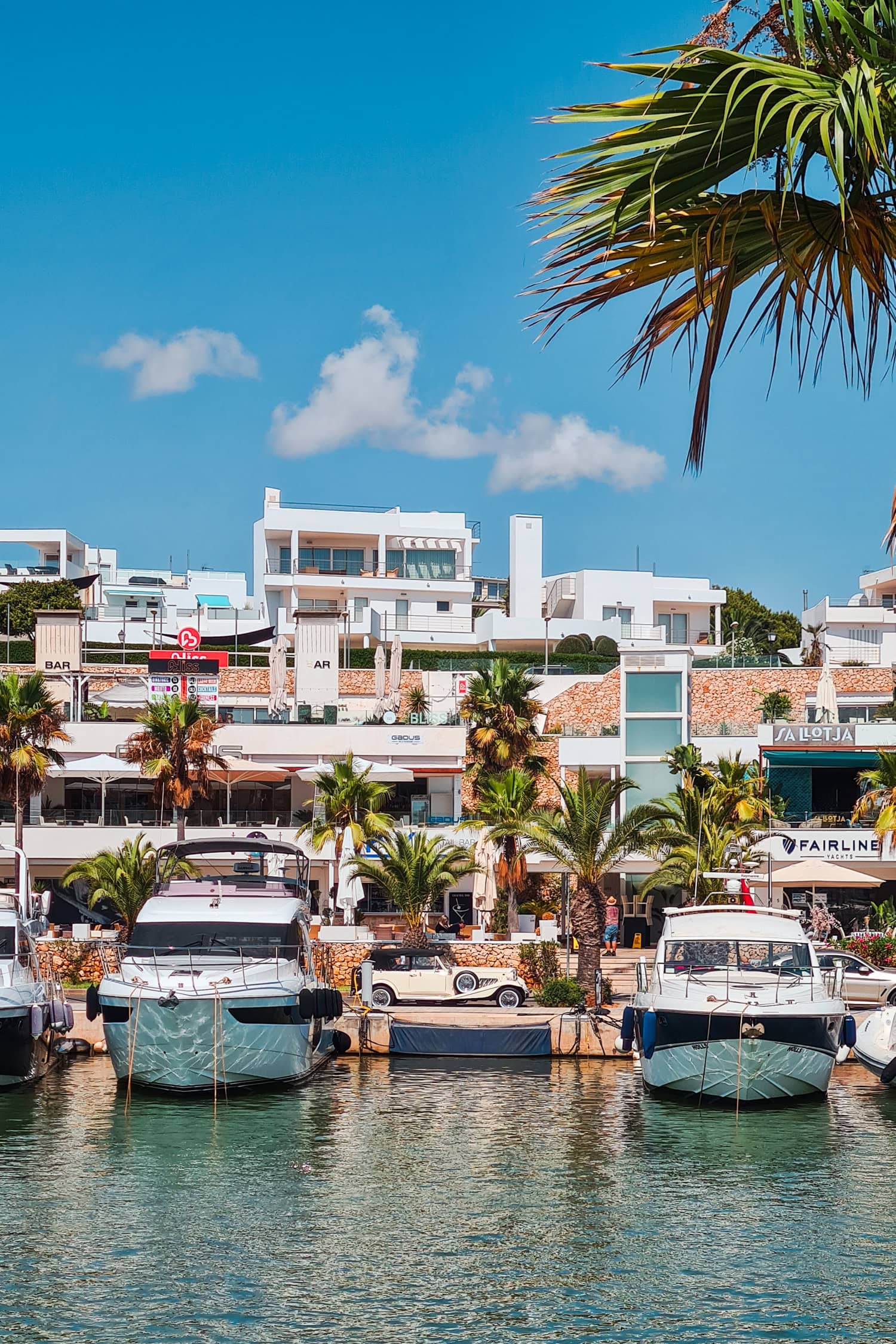

Best areas to stay in Mallorca
Choosing where to stay in Mallorca depends on your travel interests, style and length of stay. Here are some of the best areas, each with its own unique character and attractions:
Palma de Mallorca – South
The vibrant capital, Palma de Mallorca, is perfect if you love a mix of history, culture, and nightlife. If you only have a weekend or very little time, the capital is also a great base as it is close to the airport and quite central.
If you have more time but decide to explore Mallorca without a car, consider Palma as well, as almost all buses and trains start and end in Palma.
🌟 My favorite hotel in Palma de Mallorca is Hotel Basílica overlooking the beautiful Basílica de Sant Francesc.
Cala d’Or – East
Cala d’Or is ideal if you are looking for a relaxing beach vacation. This area is known for its stunning coves, crystal clear waters and family-friendly atmosphere. There are also some great restaurants and fun bars up and running during the summer months.
The marina area is dotted with lovely cafes and restaurants, making it a nice spot for evening strolls. It’s perfect for water sports, rent a boat or jet ski and cruise around to the five different calas in town.
🌟 For accommodation in Cala d’Or, I love Eques Petit Resort, the pool area and grounds are stunning.
Port de Pollença – North
Port de Pollença offers a mix of beautiful beaches and mountainous landscapes, making it a great area for nature lovers and outdoor enthusiasts.
The town has a lovely promenade lined with cafes and shops, and it’s a gateway to the Serra de Tramuntana mountain range, ideal for hiking and cycling.
🌟 MarSenses Puerto Pollensa Hotel & Spa is my favorite place to stay in this area.
Sóller – West
Located in the Tramuntana mountain range, Sóller is perfect for those who enjoy a mix of mountain and coastal scenery. The port of Sóller, just a short tram ride away, offers beautiful beaches and delicious fresh seafood.
I highly recommend this area for hikers, cyclists, and anyone who wants to be in the mountains and close to the sea with lots of natural highlights around and easy access to the rest of the island.
🌟 I love love love L’Avenida, a manor house in the middle of Sóller that feels very exclusive and old-worldly.
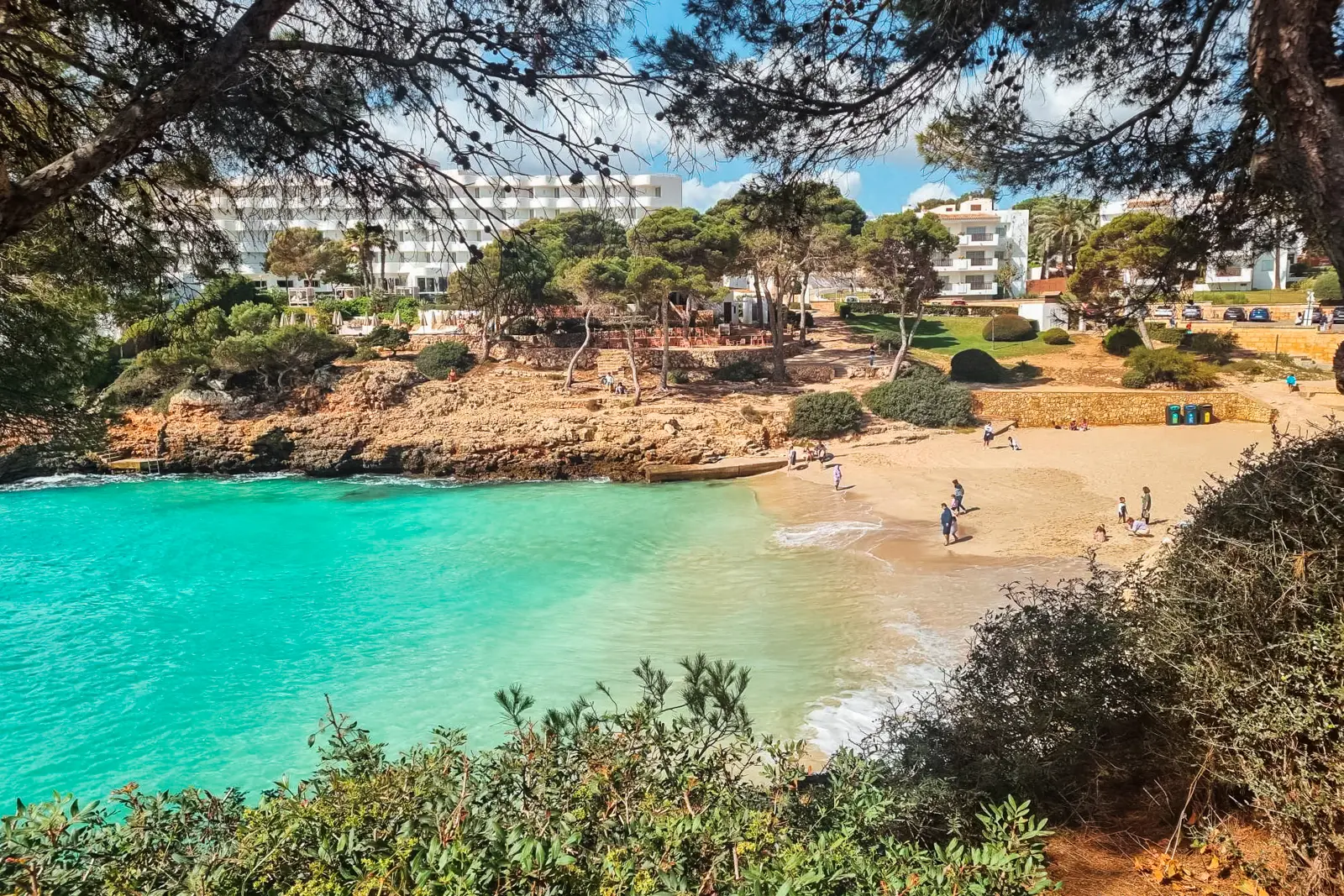
Best restaurants in Mallorca
This one is for my fellow foodies. You might already know that I usually plan my trips around the restaurants I want to try. I did not do that in Mallorca this time, but I still had one of the best food experiences I’ve had in years.
Below I have included some of my favorites, and you’ll find many more in the highlights map.
Diferent Restaurant Cala Do’r
OMG, I don’t know how to describe this, my mouth is literally watering. We had dinner at Diferent Restaurant several nights in a row, and all the dishes I tried were delicious.
I recommend treating this restaurant as a tapas place and ordering 3-4 of the starters/raw bar for each person. The pulled pork tacos are my absolute favorites. One day I ordered three servings haha. The truffle croquettes, crispy rice and fried zucchini blossoms also have to be mentioned.
Pro tip >> Right across the street, you’ll see a colorful boho bar called Lola. You can sit down at one of their tables closest to Diferent and order food from there and drinks from Lola.
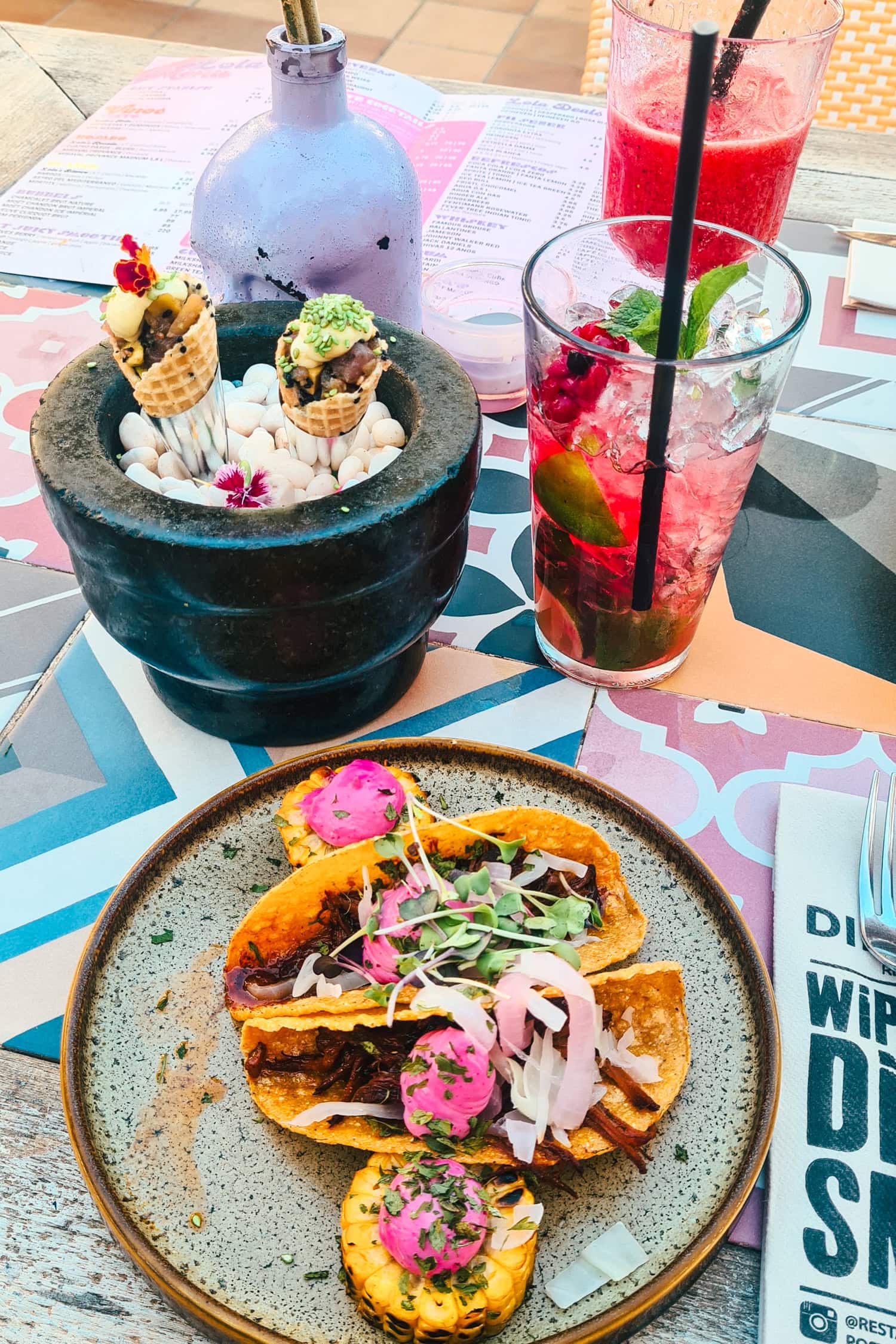

Cassai Gran Café
If you’re looking for the cutest cafe in Mallorca, you have to visit Cassai Gran Café in Ses Salines. Think sushi, paella, burgers and pizza under hanging flowers and fairy lights. They make their own iced tea and even have a pink cotton candy machine, need I say more?!
The town itself is also super charming, with boutiques and a botanical garden called Botanicactus, focusing on cacti.
Ca’n Joan de s’Aigo
Ca’n Joan de s’Aigo, established in the 18th century, is a beloved institution in Mallorca’s capital. Steeped in history, this charming café exudes an old-world atmosphere, inviting locals and tourists alike to step back in time as they cross its threshold.
Renowned for their rich and creamy hot chocolate, famous ensaimadas (flaky spiral pastries) and an array of homemade ice cream flavors, Ca’n Joan de s’Aigo is a testament to traditional Mallorcan confectionery.
Café Ca’n Toni
Café Ca’n Toni, nestled in the heart of Palma’ de Mallorca’s Old Town, is an authentic tapas restaurant, known for its warm and welcoming atmosphere. Reservations are recommended at night, and I highly recommend getting a table on the patio.
Frequented by tourists and locals alike, the restaurant offers a delightful array of traditional tapas, from succulent jamón ibérico and patatas bravas to freshly prepared seafood dishes.
El Olivio
El Olivo, located in the picturesque village of Deià, is a renowned fine dining restaurant set within the luxurious Belmond La Residencia hotel. During the summer months, a reservation is a must.
Housed in a beautifully restored 16th-century olive press, the restaurant offers an enchanting atmosphere with its rustic stone walls, candlelit tables and stunning views of the Tramuntana Mountains.
Kingfisher
Kingfisher is another one of my favorite restaurants in Mallorca. Set on the water’s edge in Port de Sóller, overlooking yachts and sailboats, it is the perfect place to feast on fresh seafood.
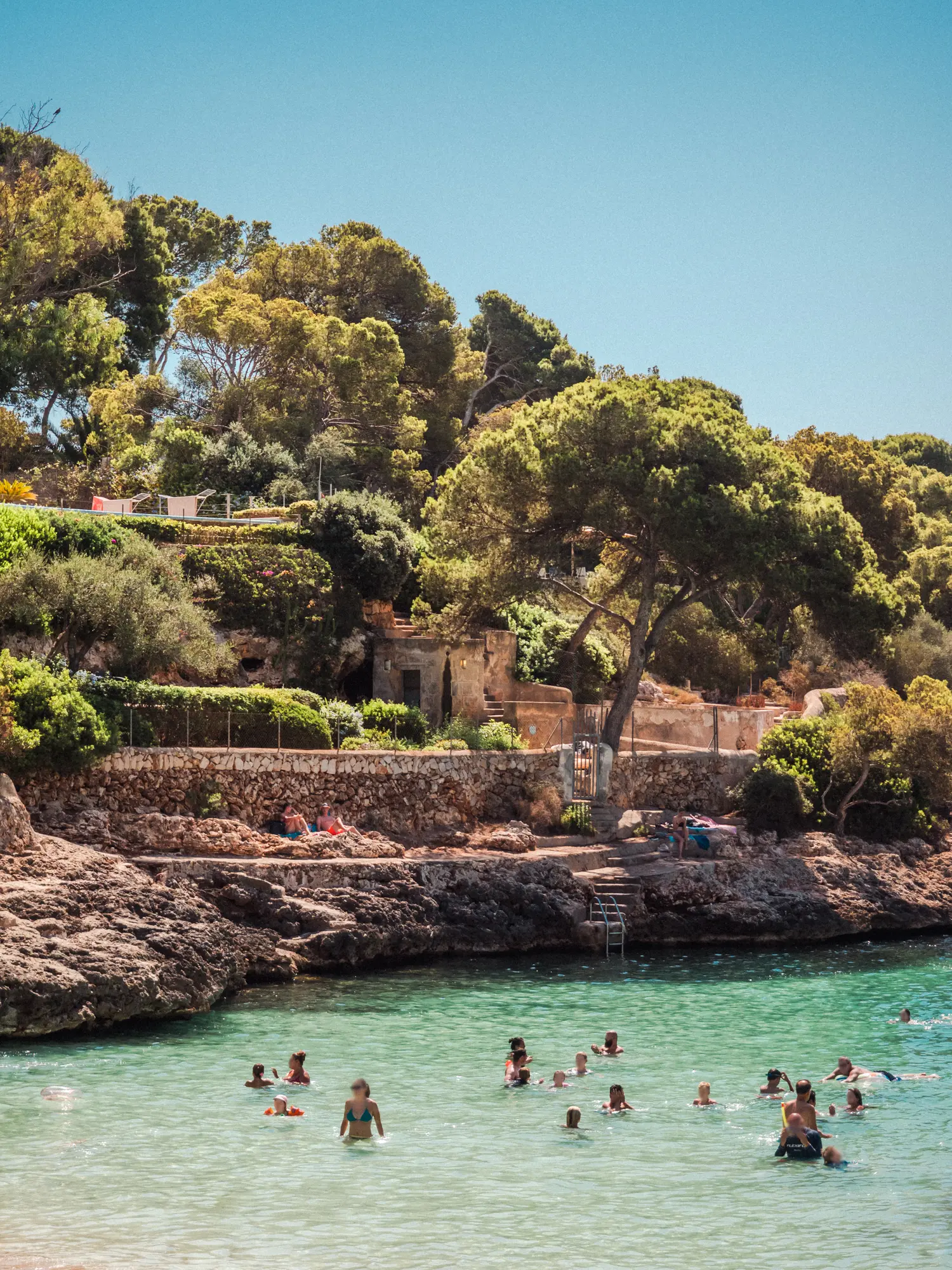

Is Mallorca expensive?
Yes and no. What is expensive is relative, but I would say that Mallorca falls somewhere in the middle of travel prices globally, with a daily average travel cost of $150. It is cheaper than Scandinavia and the US, but more expensive than let’s say Murcia Spain or Albania.
During peak tourist season, which typically runs from late spring to early autumn, prices for accommodation, car rentals and activities often double from the low season.
How to travel Mallorca on a budget:
- Travel during the shoulder season
- Stay in lesser-known areas
- Eat where locals dine, buy fruit to eat on the beach
- Enjoy the many natural attractions
- Use public transportation
- Book your accommodation as soon as possible. I booked a week in a hotel in Cala d’Or for my sister for €1300, and a month later that same room cost €2200 for the same time period.
How much for 1 week in Mallorca?
I spent €800 during my last trip to Mallorca in July, including accommodation and traveling with a friend. I got a great deal on Hotel Playa Mondragó in Mondrago Natural Park, set right on the beach. Breakfast was included in the room price, and we had two meals in restaurants every day.
Other than that, we took the bus back and forth to Cala d’Or most days, we got a taxi to and from the airport for €100 each way and bought a few souvenirs.
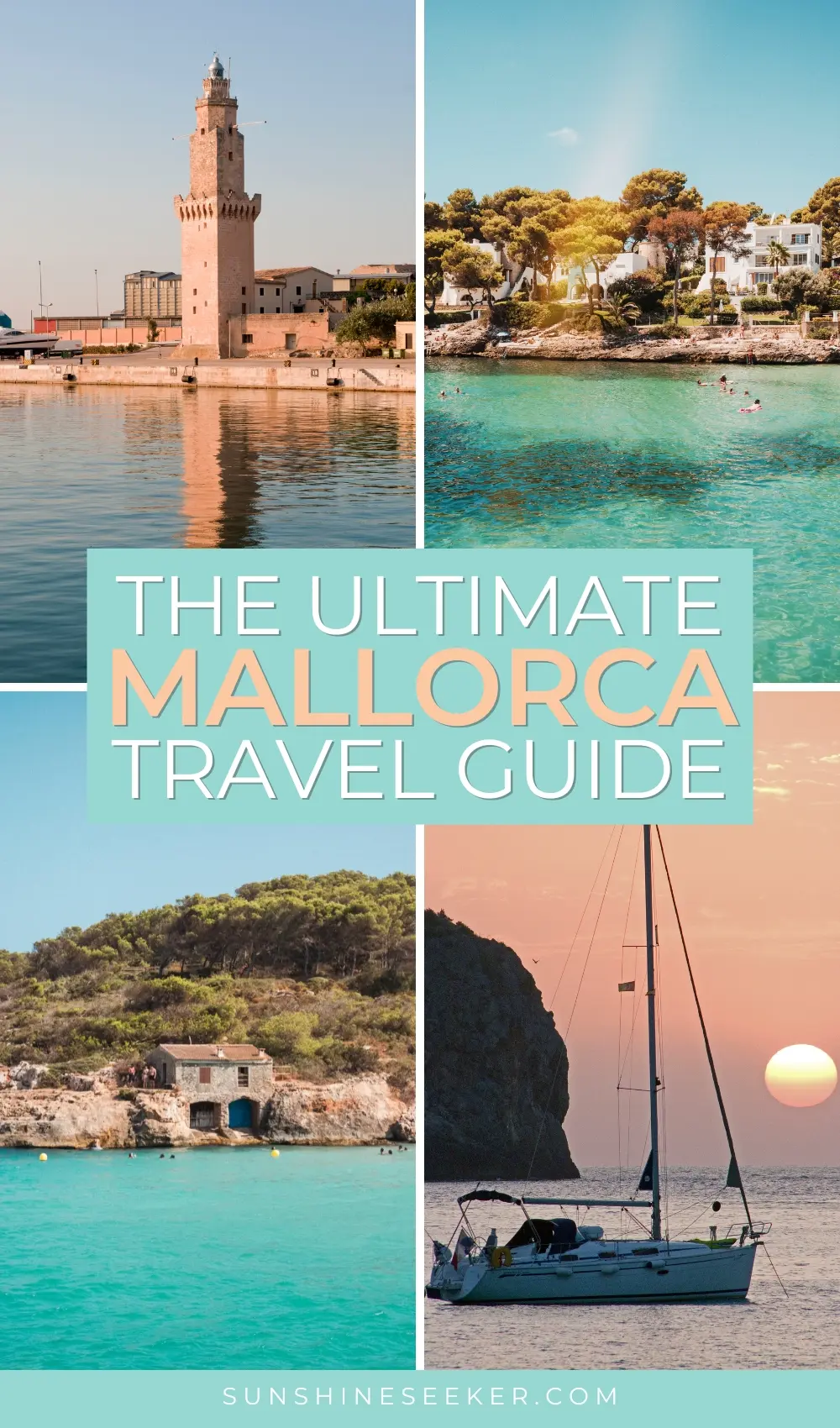



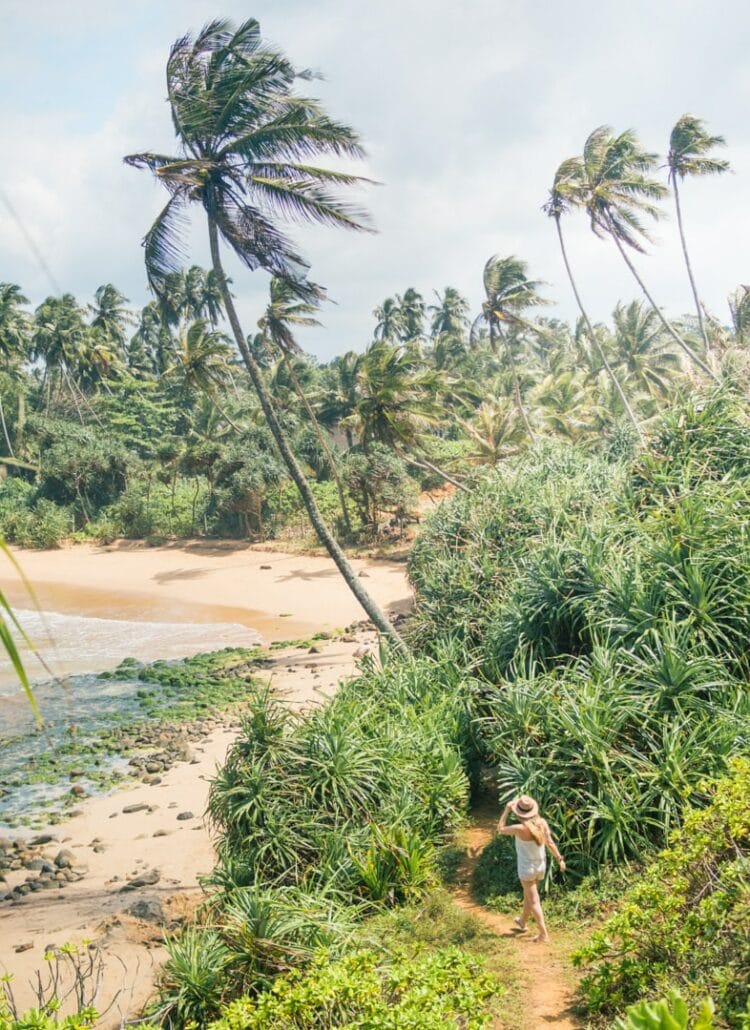
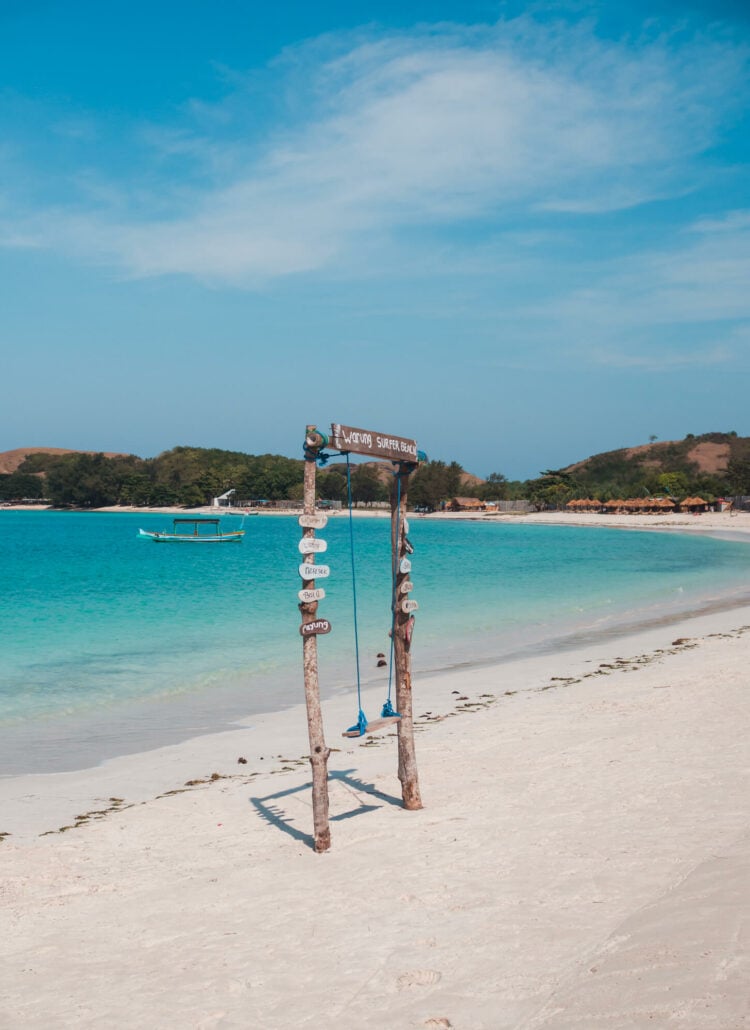
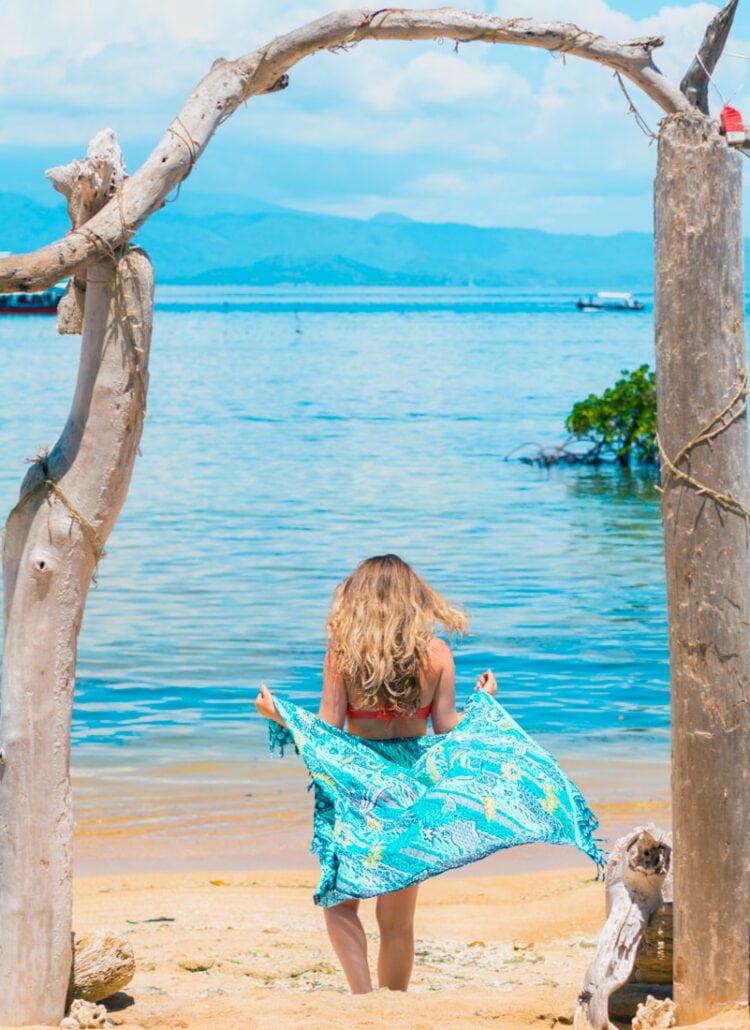
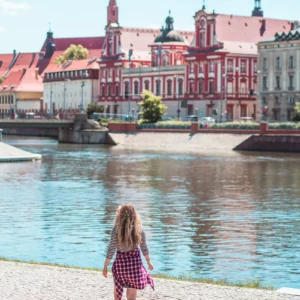
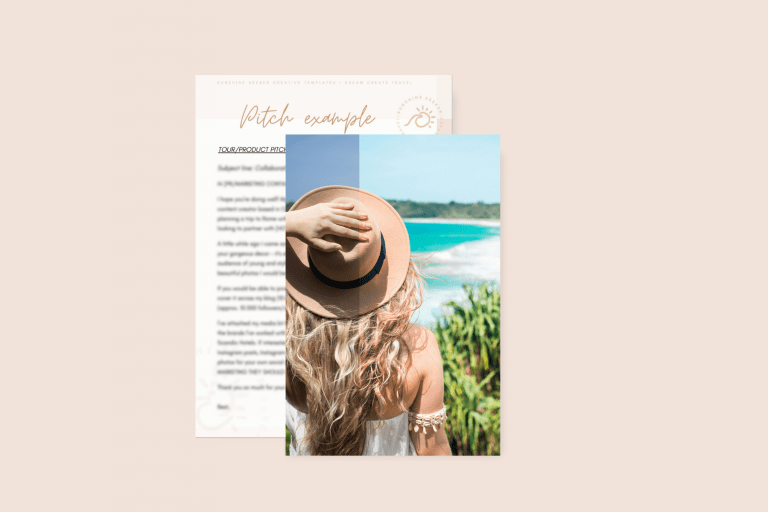


I loved Mallorca when I visited. I bought one of my favourite pieces of Nao there – a girl holding a duck. Can’t wait to go back.
Love it! Hope you get to go back soon, I’ heading over again next week 🤗
I have always wanted to visit this island. You are so lucky to live in Europe so it is a cheap budget flight to the destination. It is a little more expensive to travel from the U.S. Your photos are gorgeous.
Thank you! 😊 Yes, we are lucky that it’s so easy and affordable to get around. But you have all the states to explore 😉
Mallorca is on our list. I like the idea of visiting in Fall, when the water is still warm enough to swim, but the crowds have thinned out.
Yes, fall is definitely the best time to visit 😊
What a wonderful post. Very informative. I got a great sense of the island and it makes me want to plan a trip.
I’m so happy to hear that, Angela 😀